I went on my first safari in the Mikumi National Park in Tanzania by flying on a one-day trip from Zanzibar, where I was vacationing in the middle of the European winter. I was here with 5-6 people from the group with which I came on this journey. As I’ve mentioned before, I haven’t been travelling as part of a group for a long time and in fact I’ve completely weaned myself off of it. I have very specific interests and, what is even more important, I know how to and I do organise trips for myself just the way I like them. Besides, I can and I dare travel alone and I am never bored with myself. Moreover, I am a very fun “company” to myself, but I am also very much aware that this makes me almost eccentric and with age the situation can only get worse.
Be as it may, after the initial encounters with various animals, something happened that was quite a surprise for me. Very pleasant, but still unexpected. Namely, to begin with, we spotted a fresh carcass of an African buffalo.
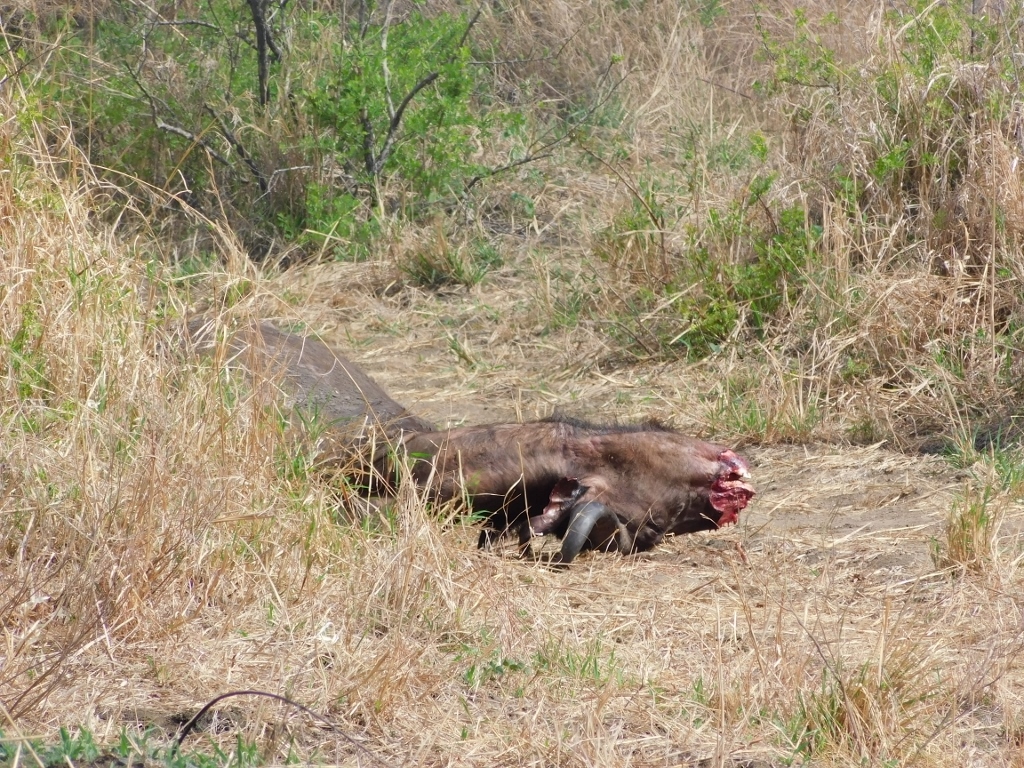 African buffalo in the Mikumi National Park
African buffalo in the Mikumi National Park
We were in that area with several other vehicles and our driver got off the main road and stopped in the now mostly dry bed of a seasonal river.
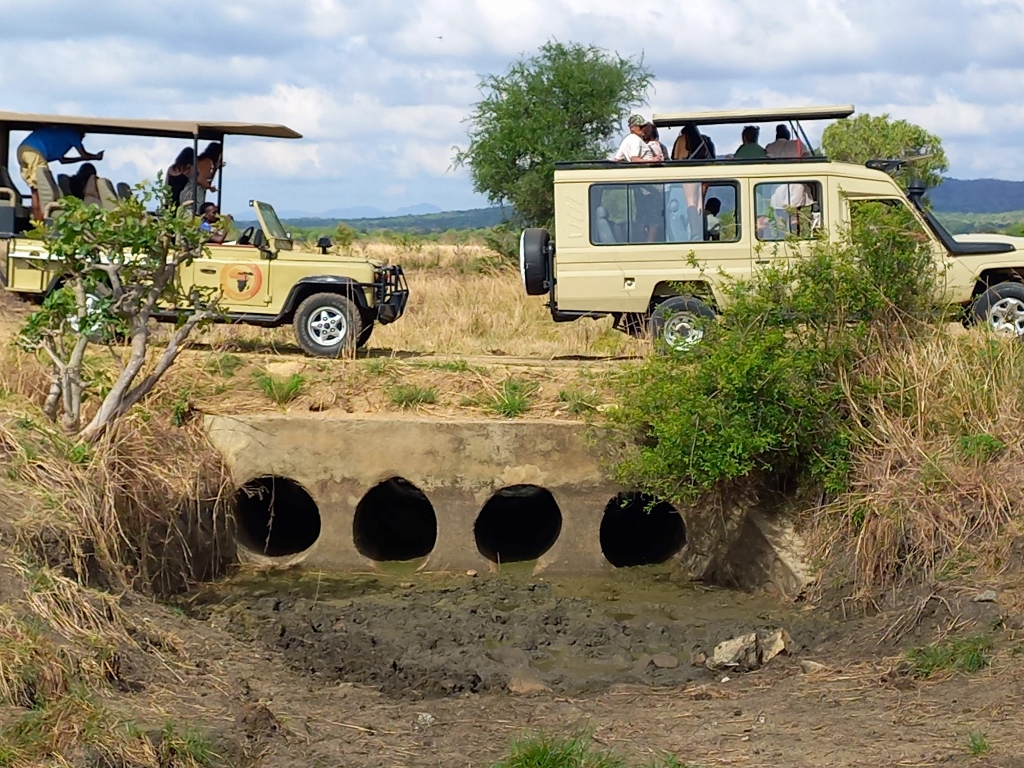 Mikumi NP
Mikumi NP
In addition to the fact that in the previous photo you can see different types of tour vehicles and that people in them were watching and filming something on the other side of the “bridge,” it seems as if there was no reason for the driver to bring us to this particular place. But that’s only because the holes in the bridge were deeply shaded and because of the high light contrast the photo does not show all the details. When I zoomed in on one of the holes, I saw something very special – a lioness!
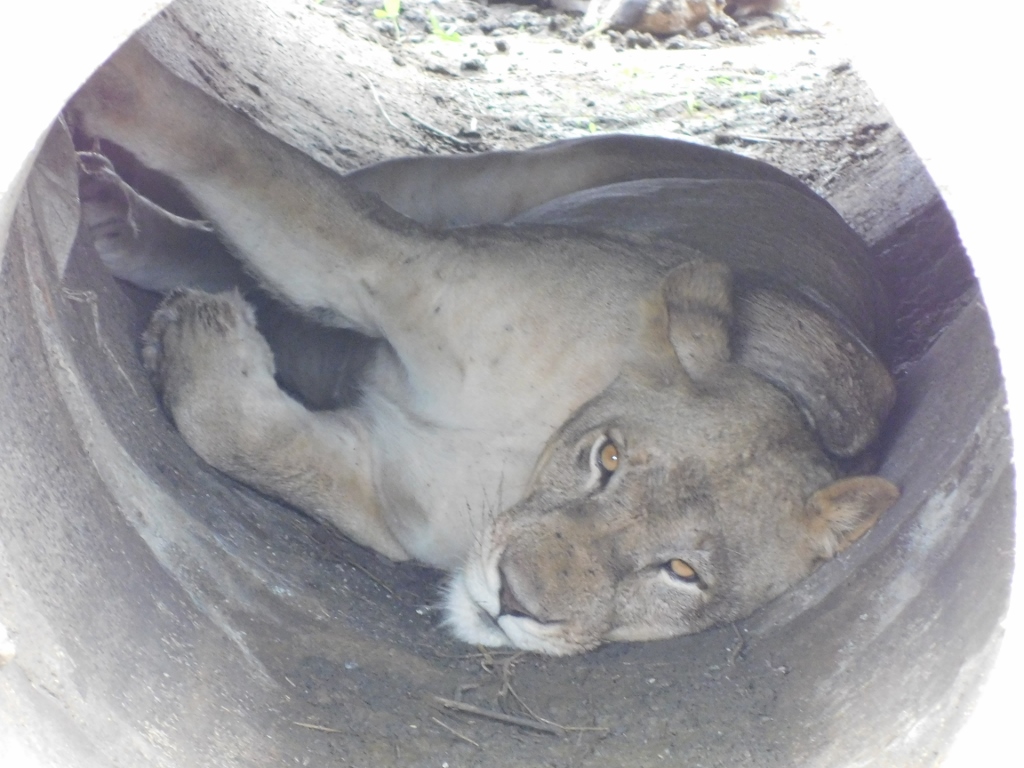 Lioness in the Mikumi National Park
Lioness in the Mikumi National Park
The driver/guide explained to us that the lions often hide here because it is less hot and the mud in the riverbed also cools them down.
However, this was not all. Only about a dozen meters away, in the shade of the trees, we saw a smaller pack of lions. I was delighted, but also surprised because I had never imagined that it would be possible to approach them this close.
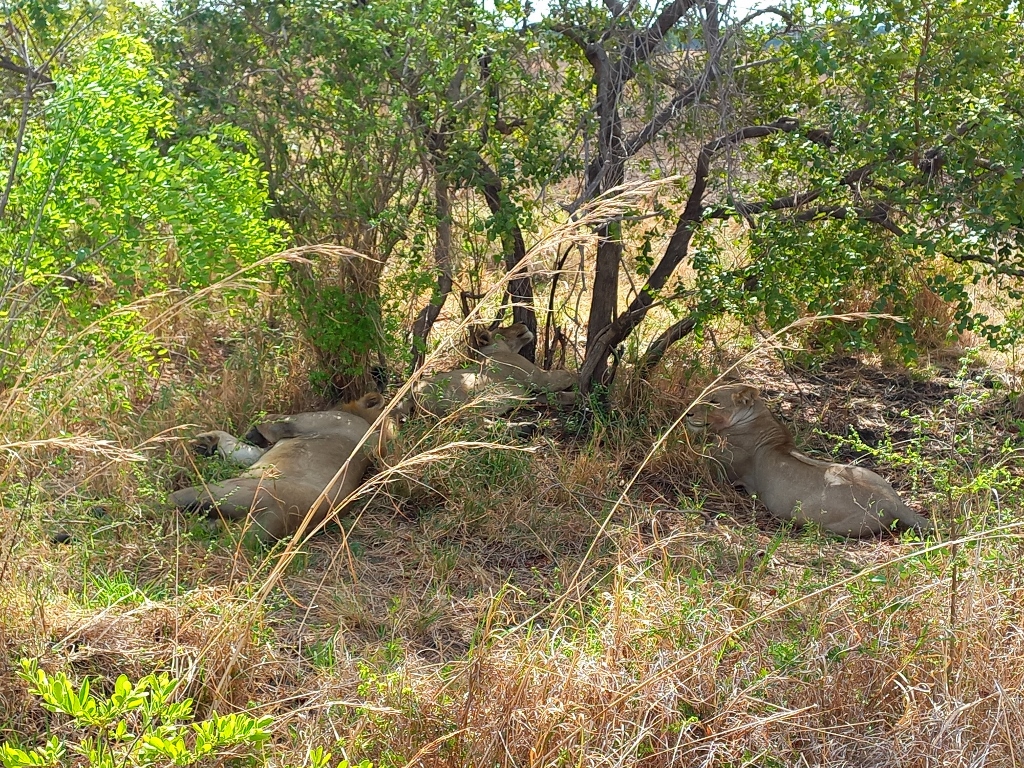 Lions in the Mikumi National Park
Lions in the Mikumi National Park
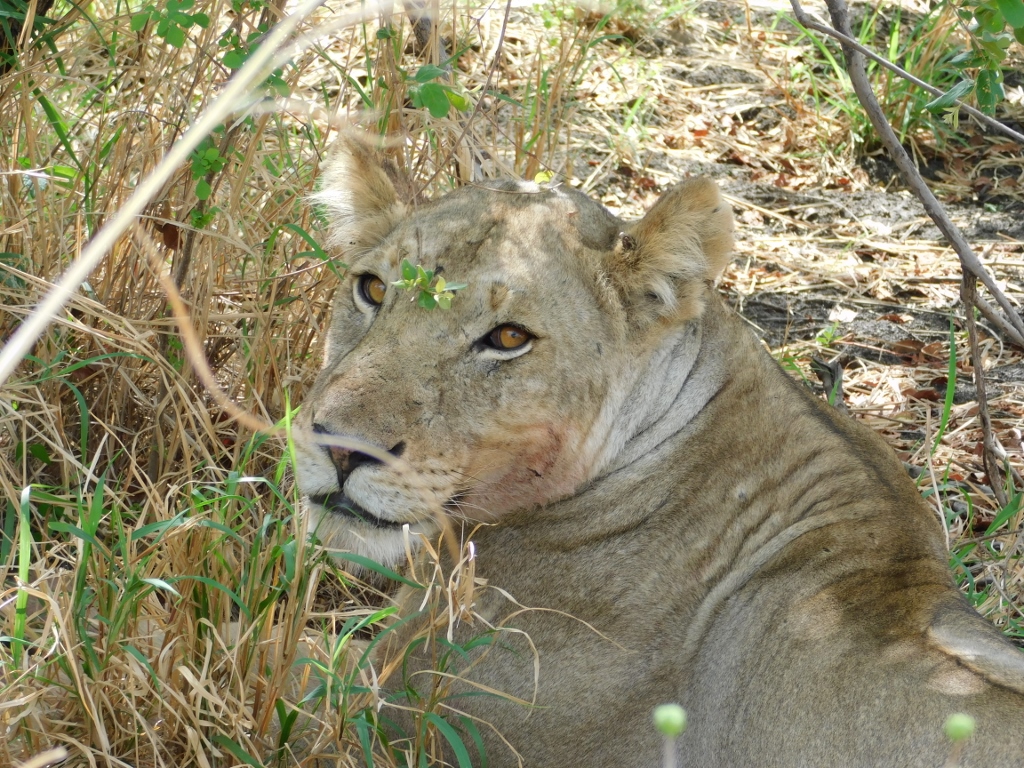 Lioness in the Mikumi National Park
Lioness in the Mikumi National Park
One lioness looked at us lazily, but other than that she didn’t react at all. I realised that the drivers/guides follow and inform one another about when and where the lions have eaten and then it is safe to approach them this close.
It was especially clear from a lion within the pack that they were all completely full and were only interested in digesting their freshly eaten food and resting in the shade, and that they were not even in the least interested in the annoying tourists. Here are a couple of photos that show just that lion. He lay there lazily, then seemingly barely raised his head to see who was bothering him and since we were obviously not important to him, he just returned to his previous, relaxed pose.
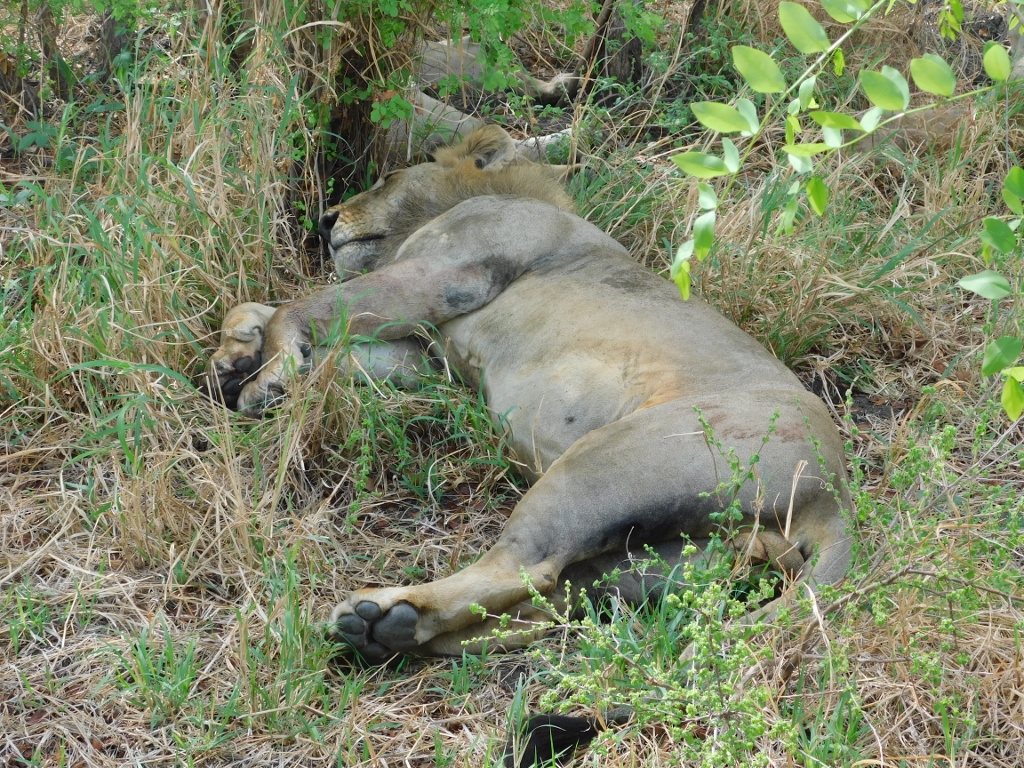 Lion in the Mikumi National Park
Lion in the Mikumi National Park
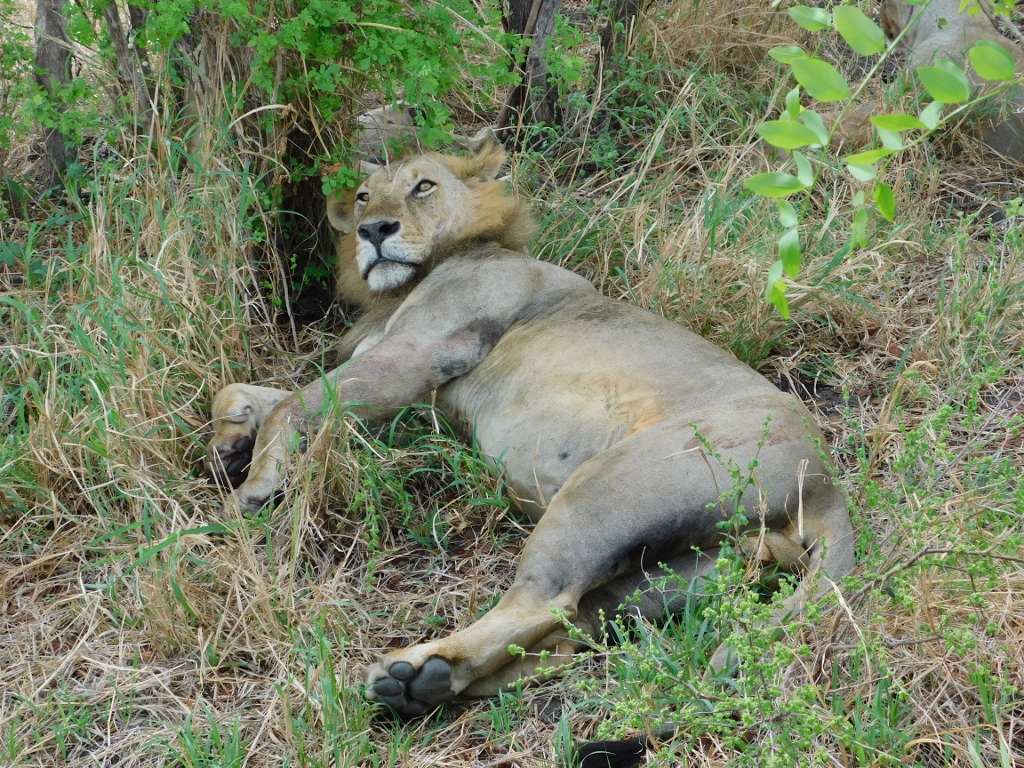 Lion in the Mikumi National Park
Lion in the Mikumi National Park
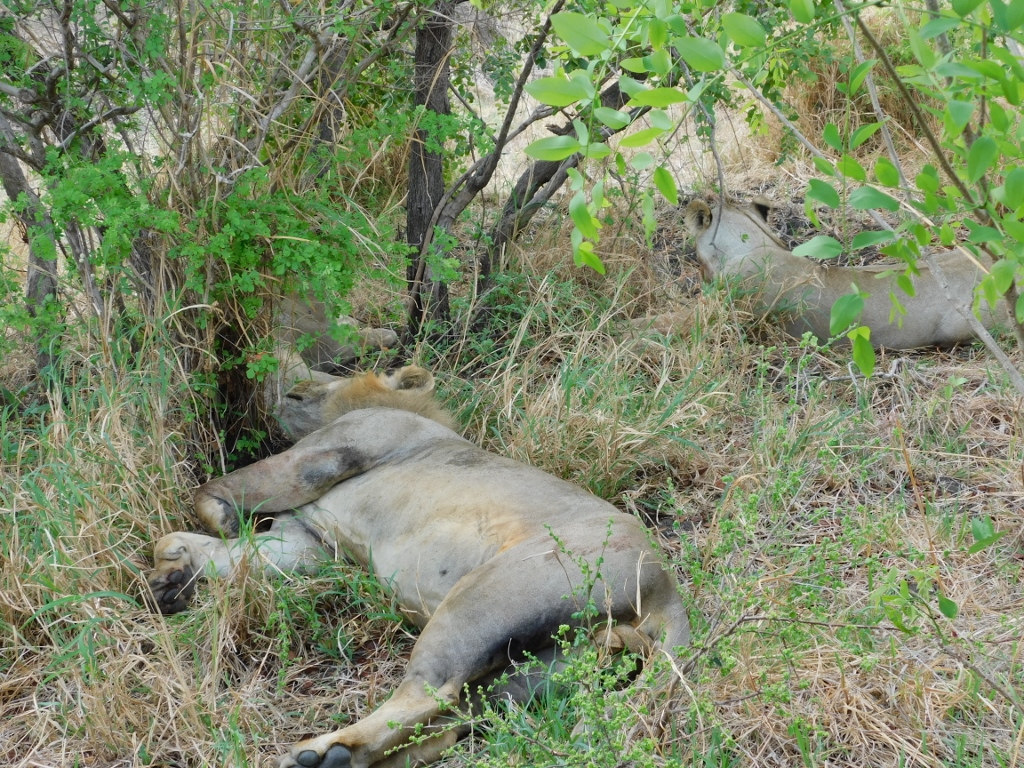 Lion in the Mikumi National Park
Lion in the Mikumi National Park
Then our driver/guide practically gave away a good vantage point for the pack to other vehicles and we were back on the road. There we took a place from which we could look at the other side of the bridge and see what the visitors from other vehicles were observing in one of the previous photos. It is obvious that the drivers are skilled at giving visitors a good view of the interesting details, but also at cooperating with each other so that everyone can take their turn and see everything they need to.
From this side, we could see an older lion that was cooling down in the shadow of the bridge, but also on the wet ground and I’m sure that he was also full.
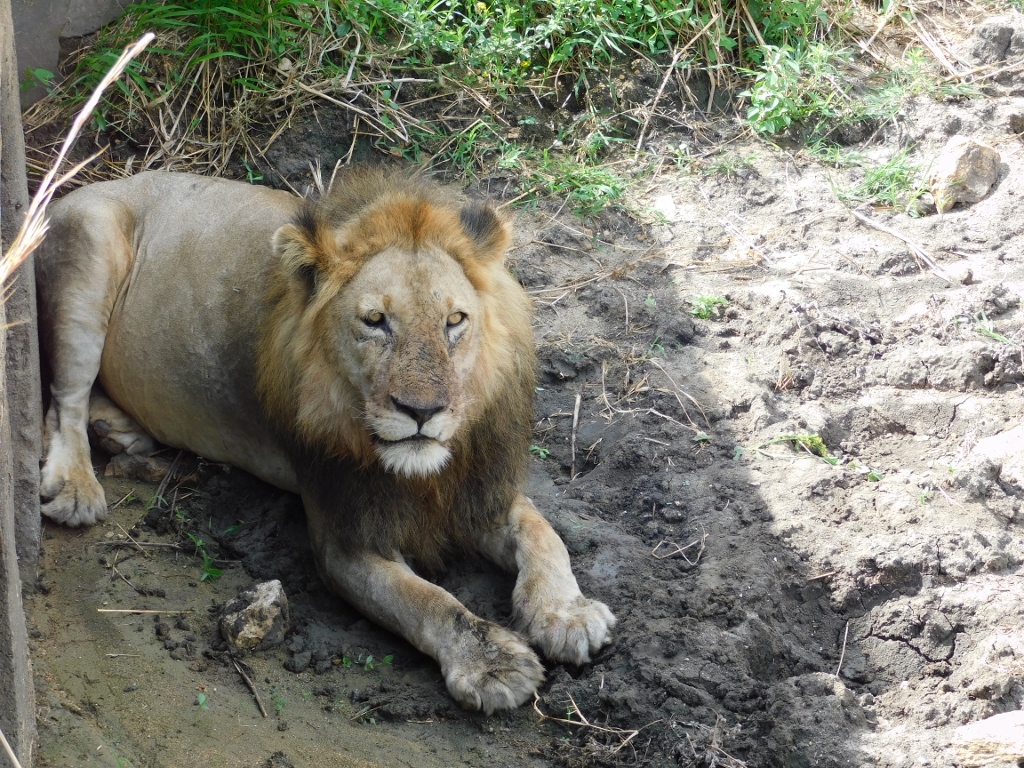 Lion in the Mikumi National Park
Lion in the Mikumi National Park
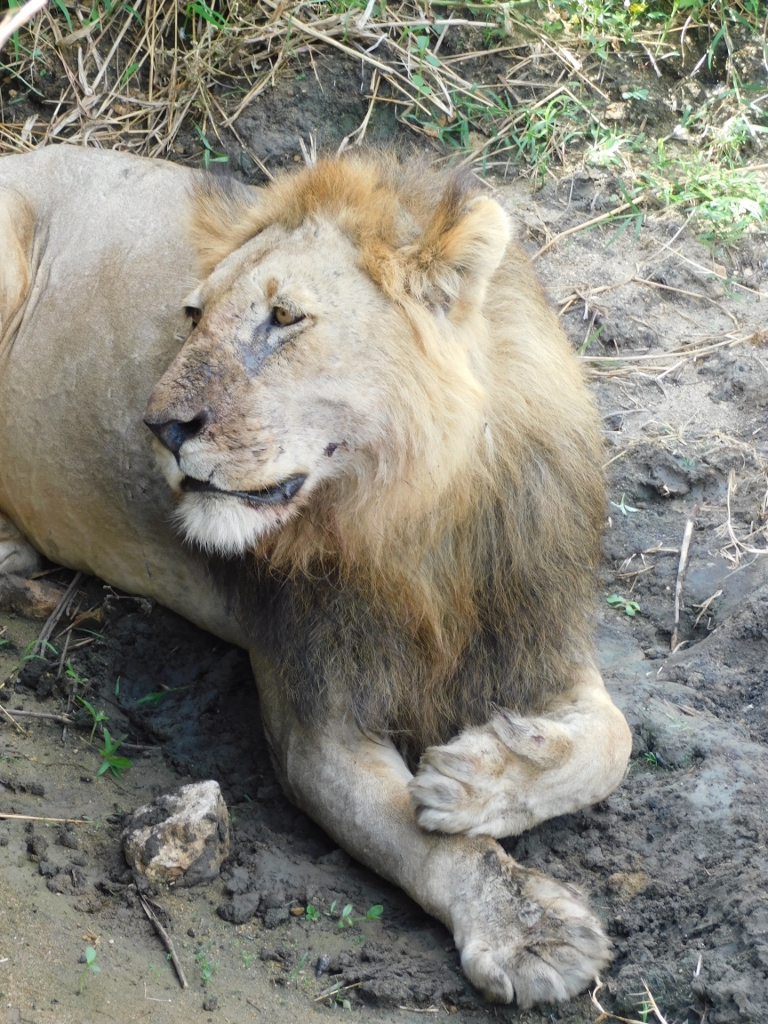 Lion in the Mikumi National Park
Lion in the Mikumi National Park
Then we continued driving through the national park, while the landscapes although seemingly rather similar were actually different.
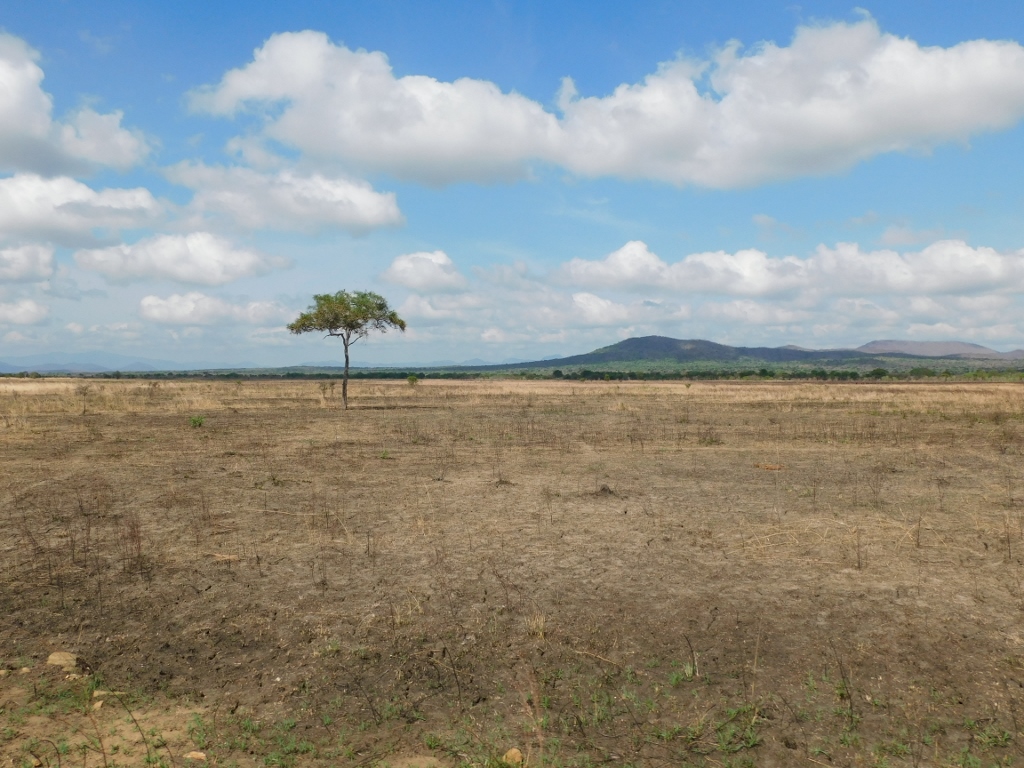 Mikumi NP
Mikumi NP
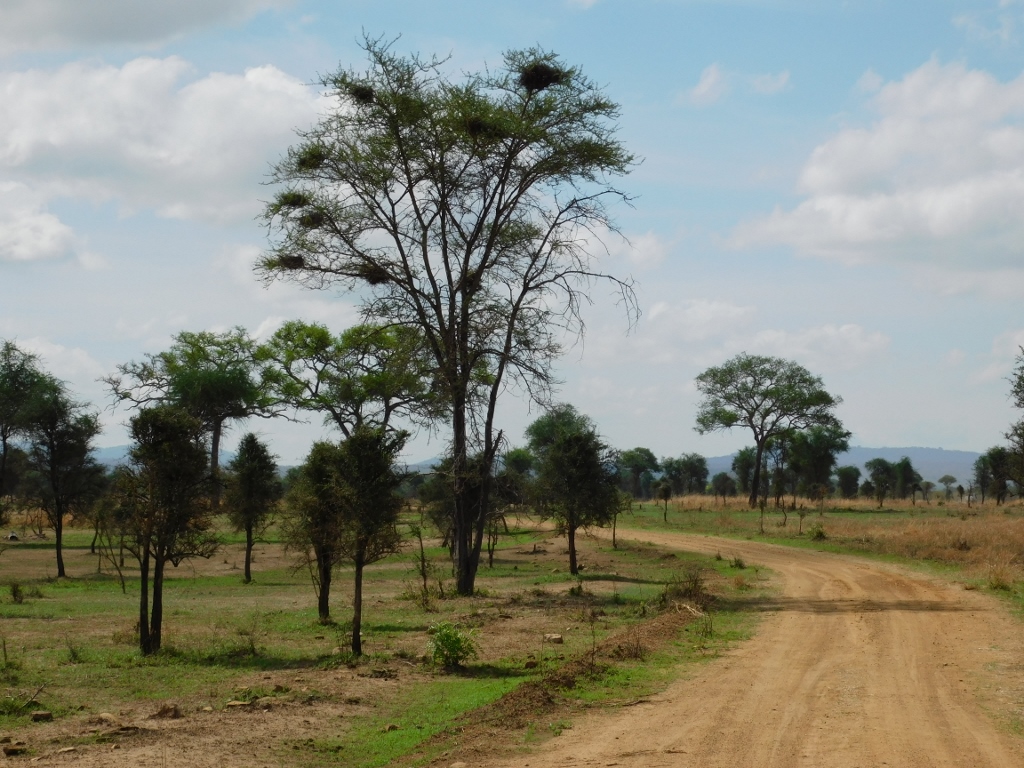 Mikumi NP
Mikumi NP
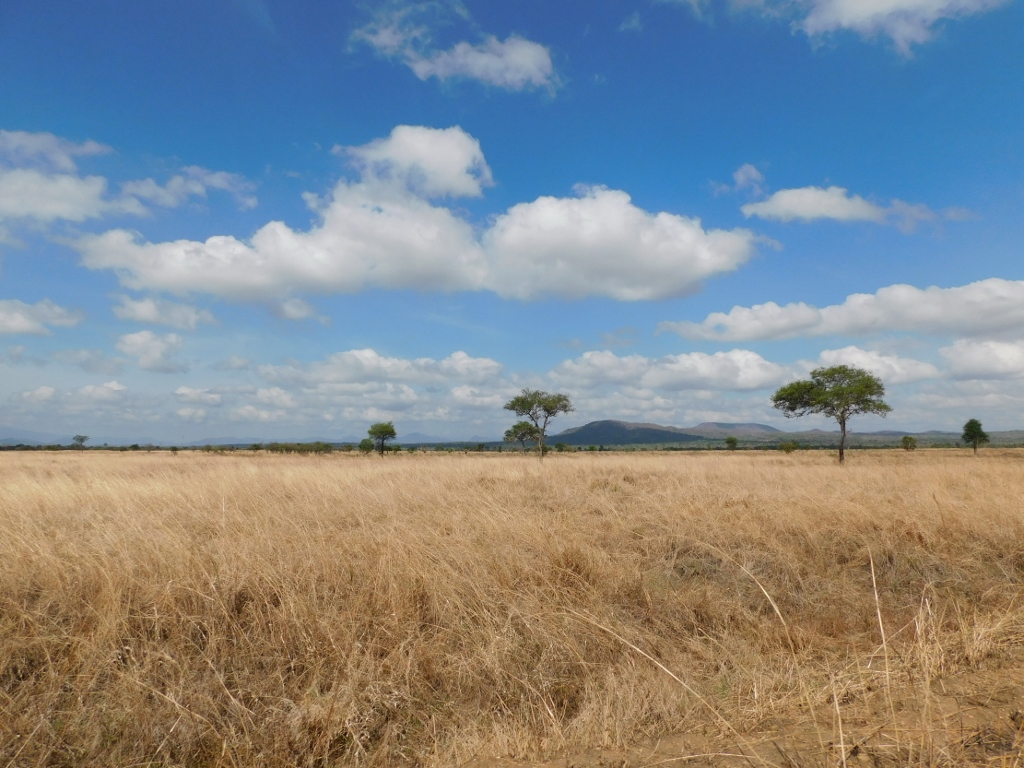 Mikumi NP
Mikumi NP
We stopped at one place to have a better view at a few small vervet monkeys (Chlorocebus pygerythrus).
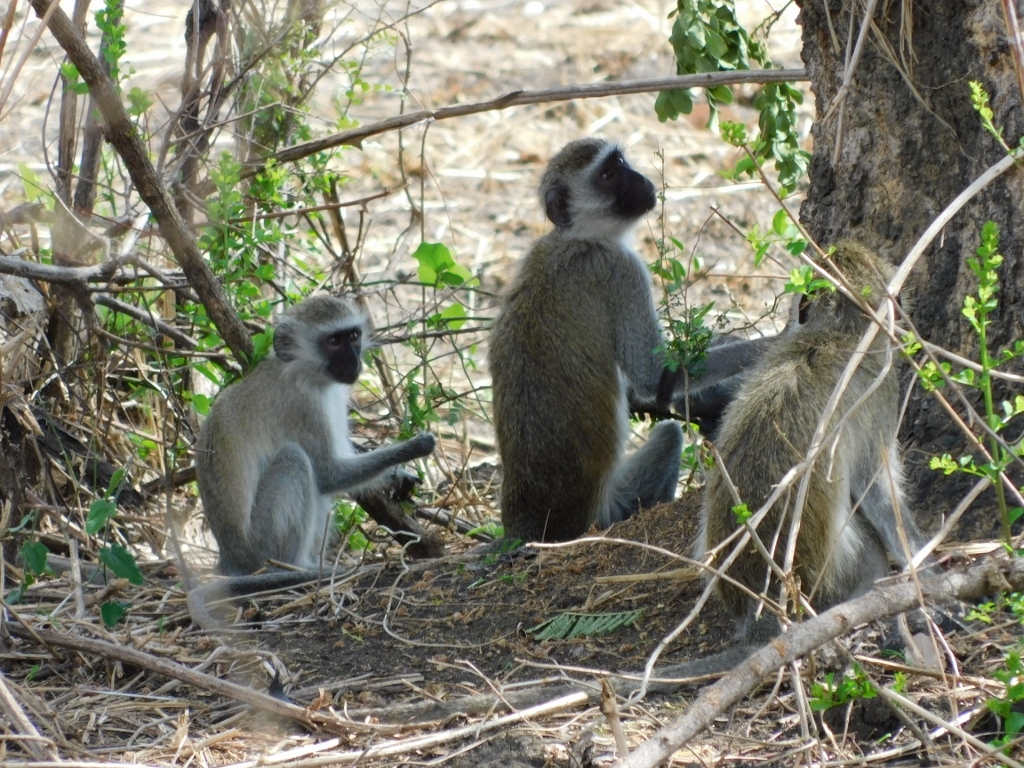 Vervet monkeys in the Mikumi National Park
Vervet monkeys in the Mikumi National Park
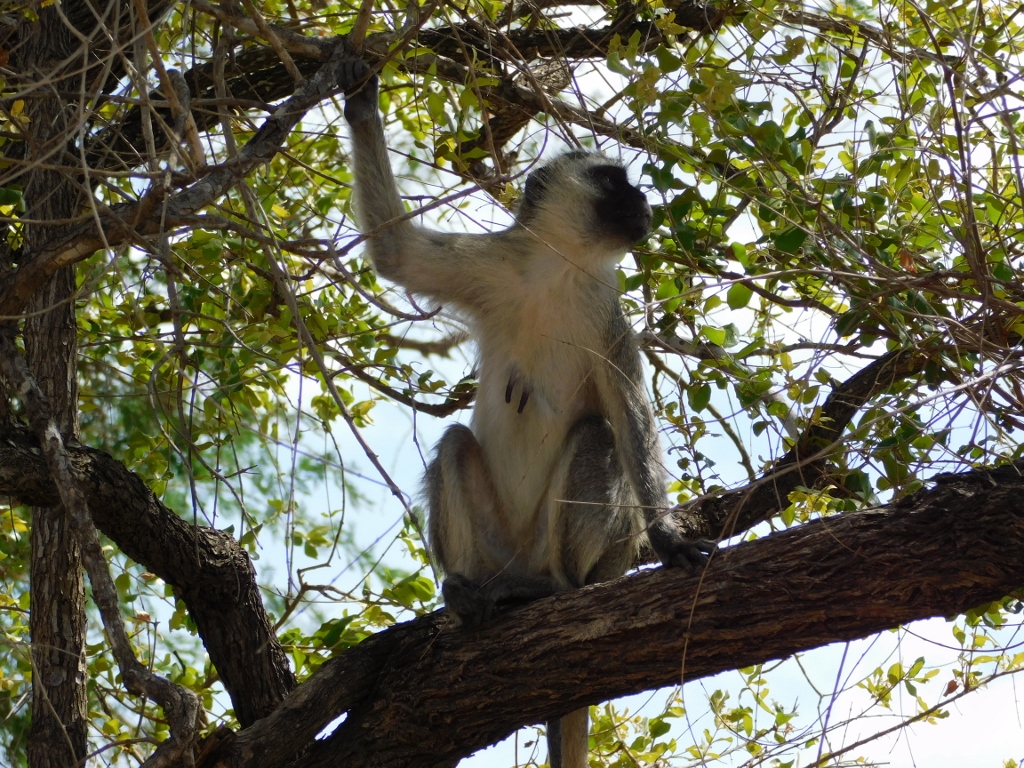 Vervet in the Mikumi National Park
Vervet in the Mikumi National Park
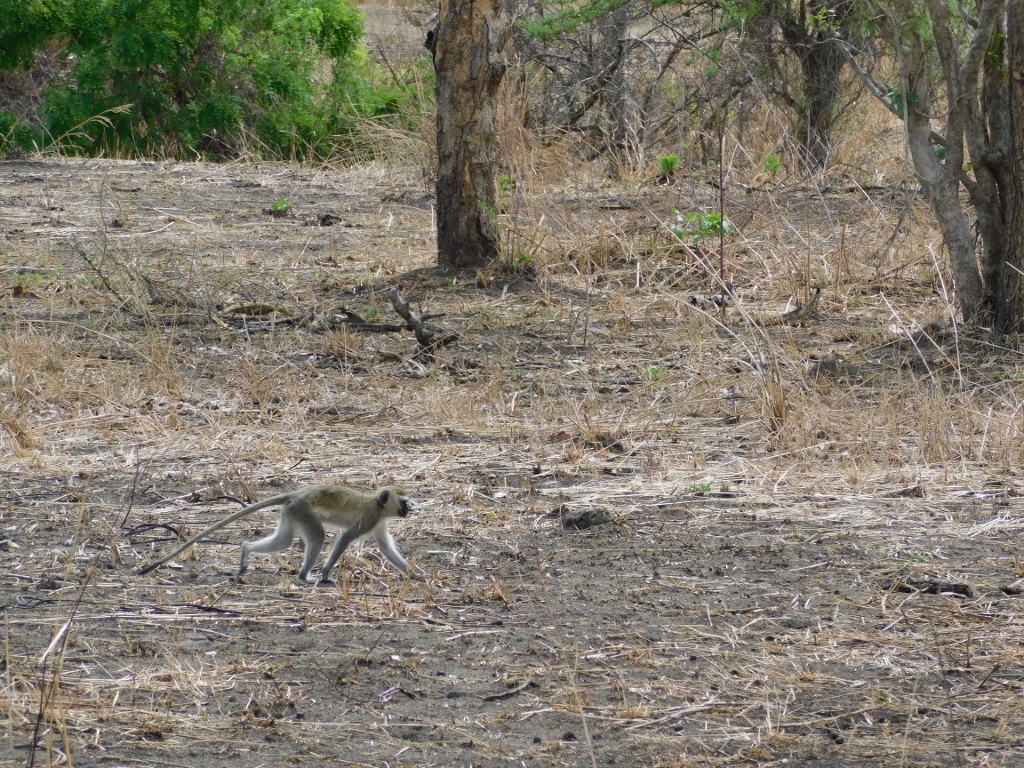 Vervet in the Mikumi National Park
Vervet in the Mikumi National Park
And then we drove back to the little pond we had passed earlier. To begin with, we stopped at one place from where I could intensely enjoy the view at different birds.
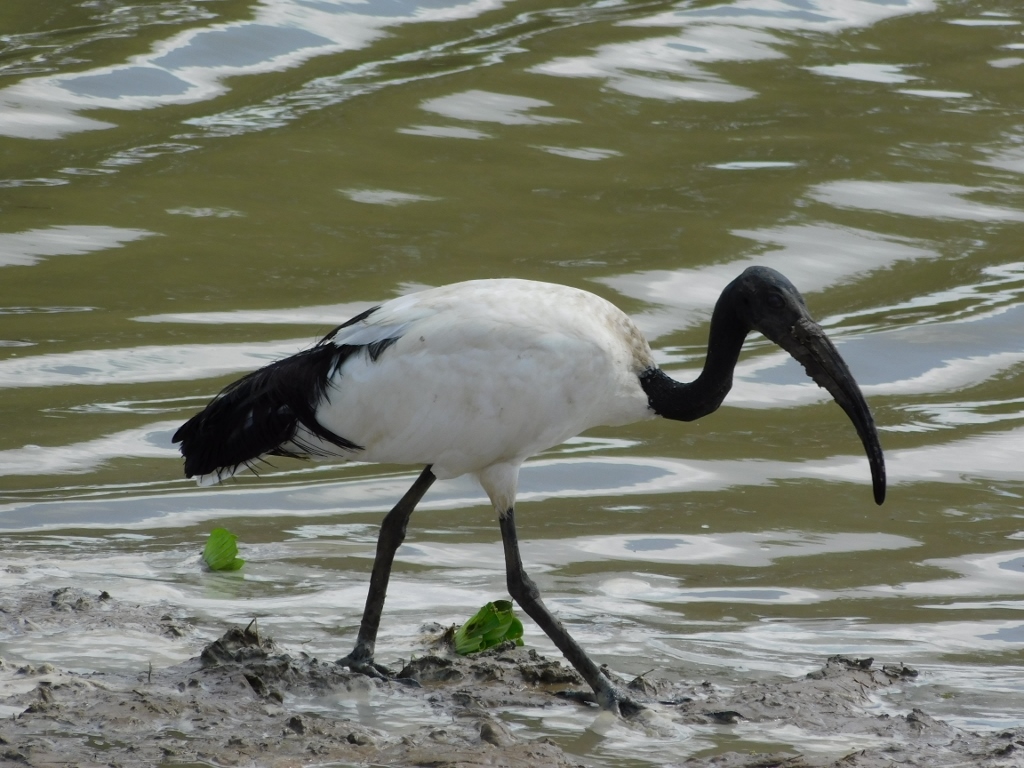 African sacred ibis (Threskiornis aethiopicus)
African sacred ibis (Threskiornis aethiopicus)
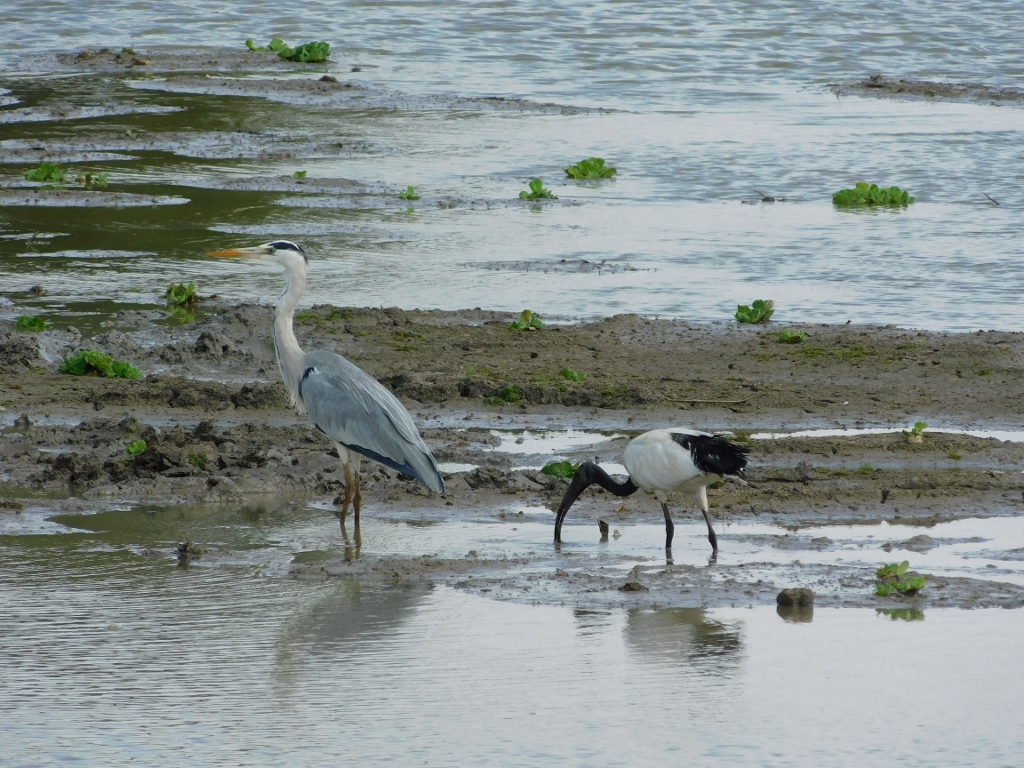 African sacred ibis and grey heron (Ardea cinerea)
African sacred ibis and grey heron (Ardea cinerea)
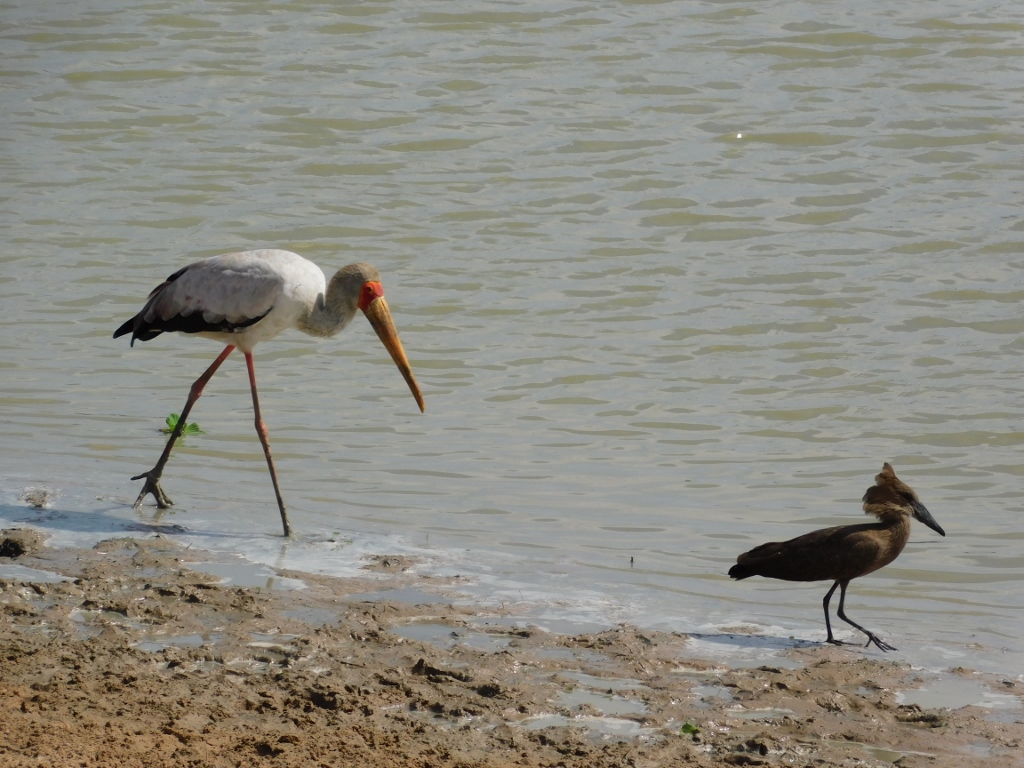 Yellow-billed stork (Mycteria ibis) and hamerkop (Scopus umbretta)
Yellow-billed stork (Mycteria ibis) and hamerkop (Scopus umbretta)
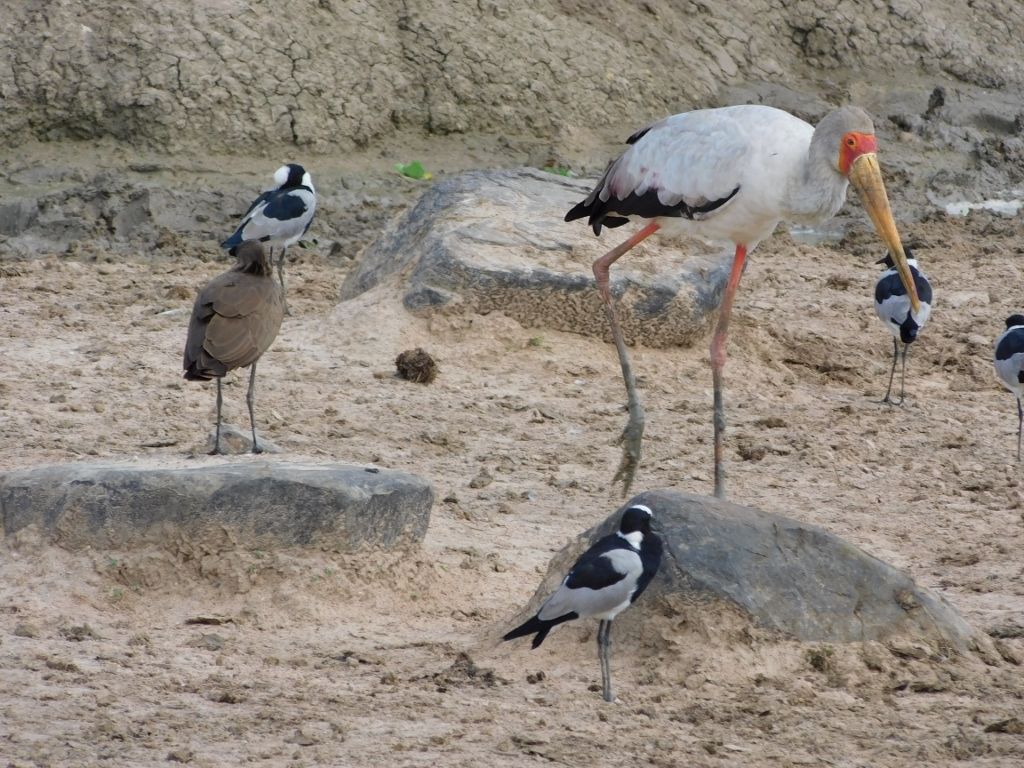 Yellow-billed stork, hamerkop and blacksmith lapwing (Vanellus armatus)
Yellow-billed stork, hamerkop and blacksmith lapwing (Vanellus armatus)
Then we moved a little and got out of the vehicle, while in addition to the birds, I could also see a Nile crocodile. I had always thought they were bigger. Maybe this was an adolescent.
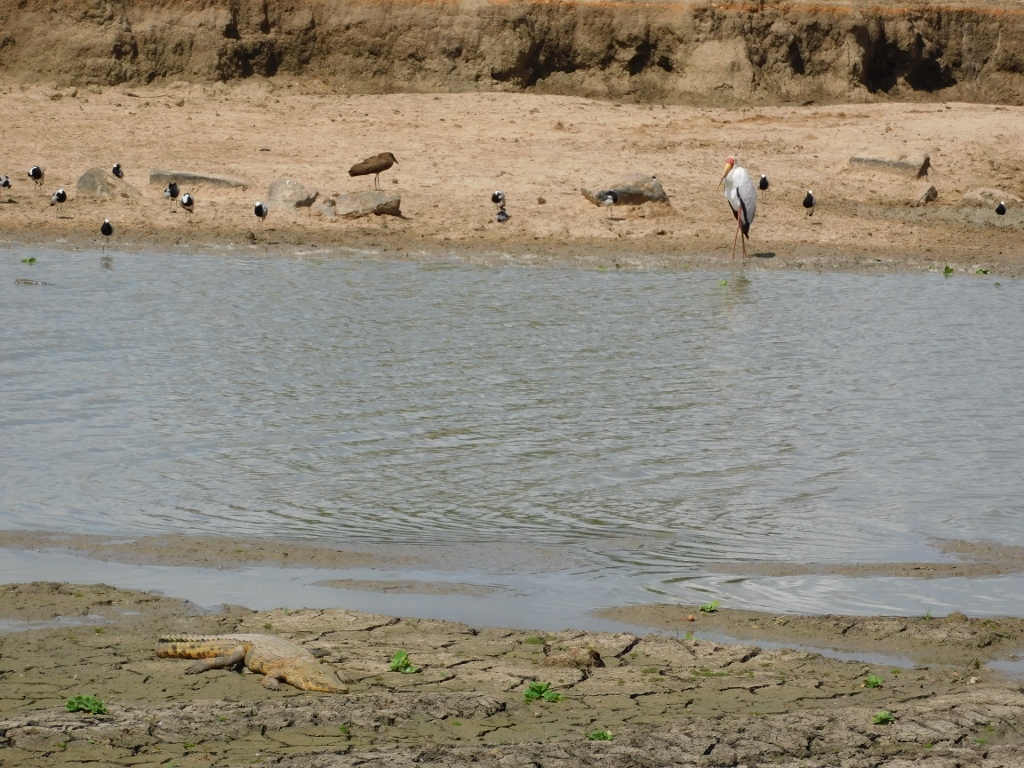 Nile crocodile and birds
Nile crocodile and birds
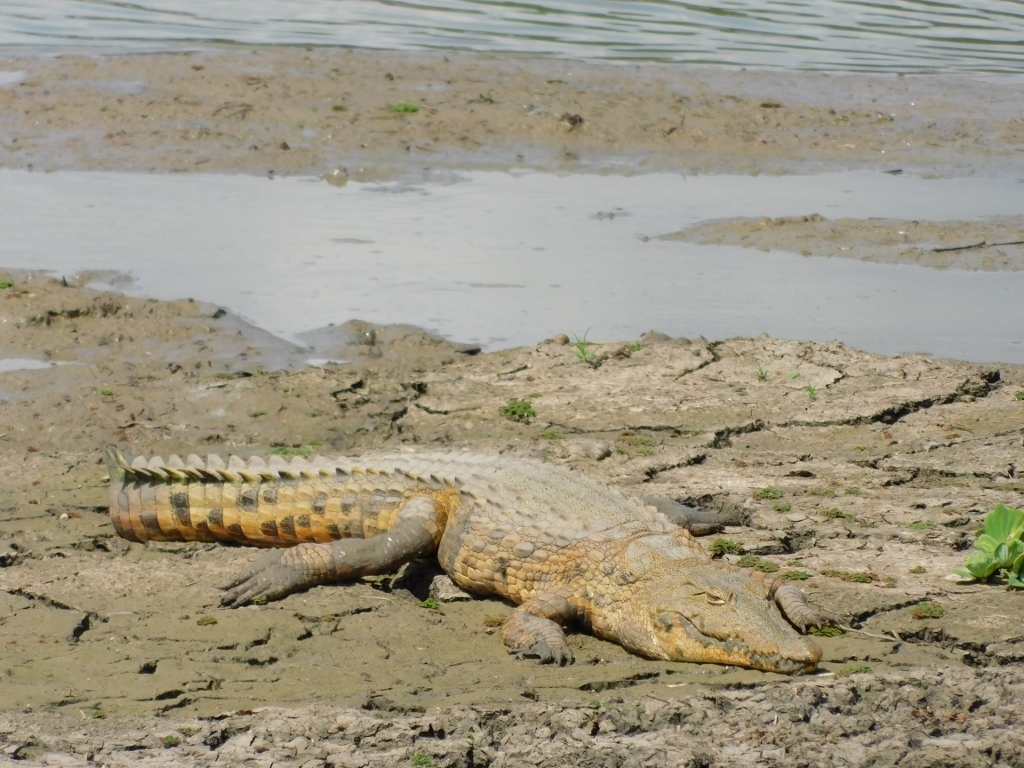 Nile crocodile in the Mikumi NP
Nile crocodile in the Mikumi NP
Here, by the small pond that serves as a watering hole, there is also a natural elevation and there we could take a short walk in order to look at the events and local residents from different sides.
 Pond in the Mikumi NP
Pond in the Mikumi NP
In addition to the animals that come here to drink water, there were also some others that apparently lived here permanently. For example, some hippos.
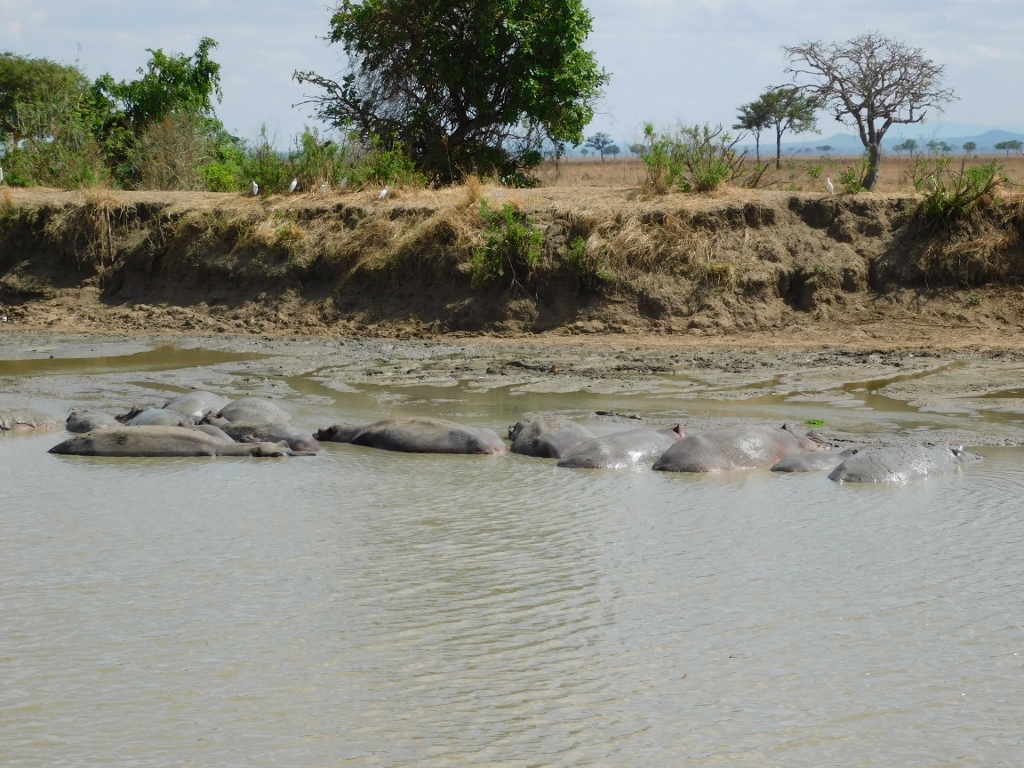 Hippopotamuses in the Mikumi NP
Hippopotamuses in the Mikumi NP
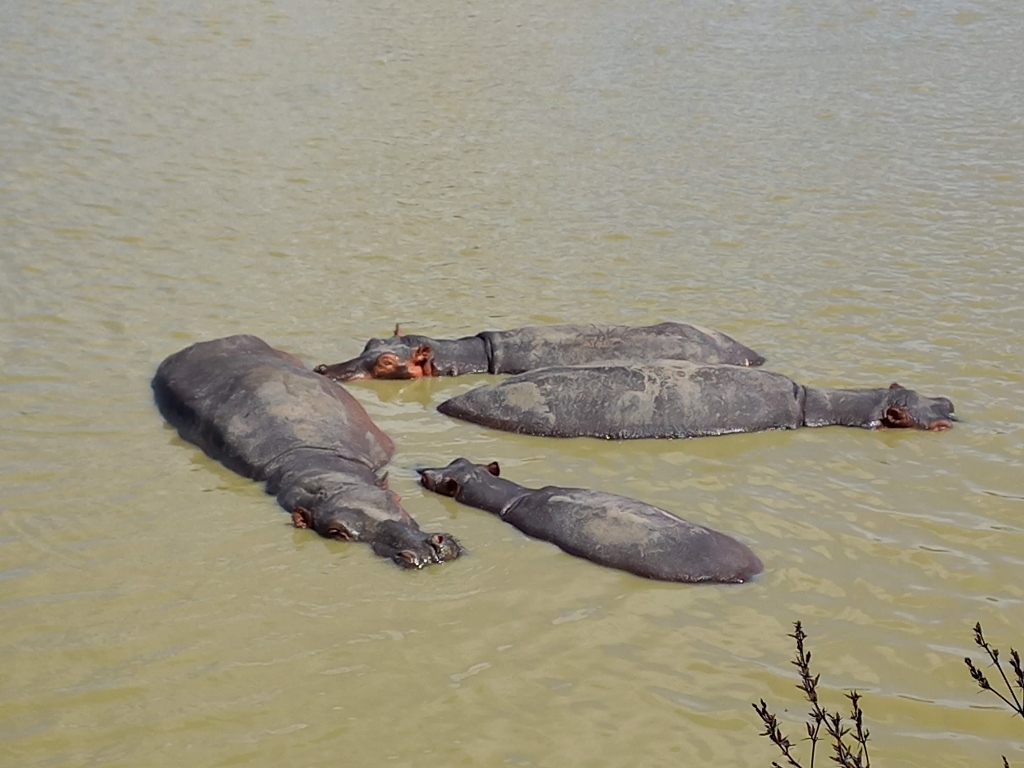 Hippopotamuses in the Mikumi NP
Hippopotamuses in the Mikumi NP
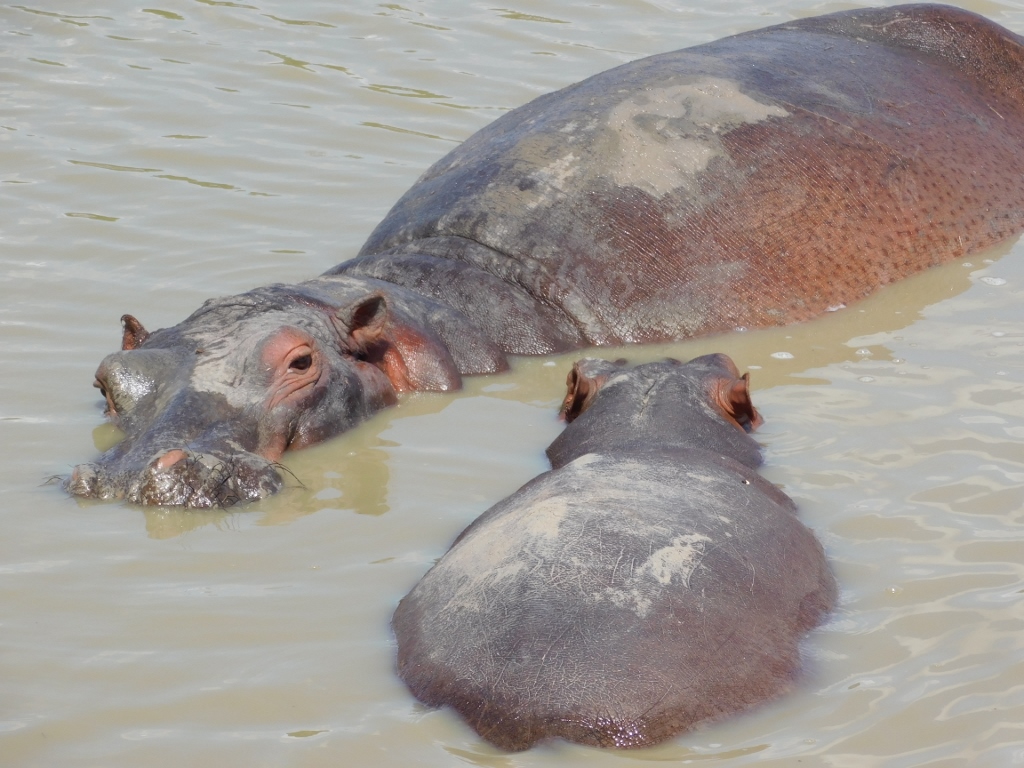 Hippopotamuses in the Mikumi NP
Hippopotamuses in the Mikumi NP
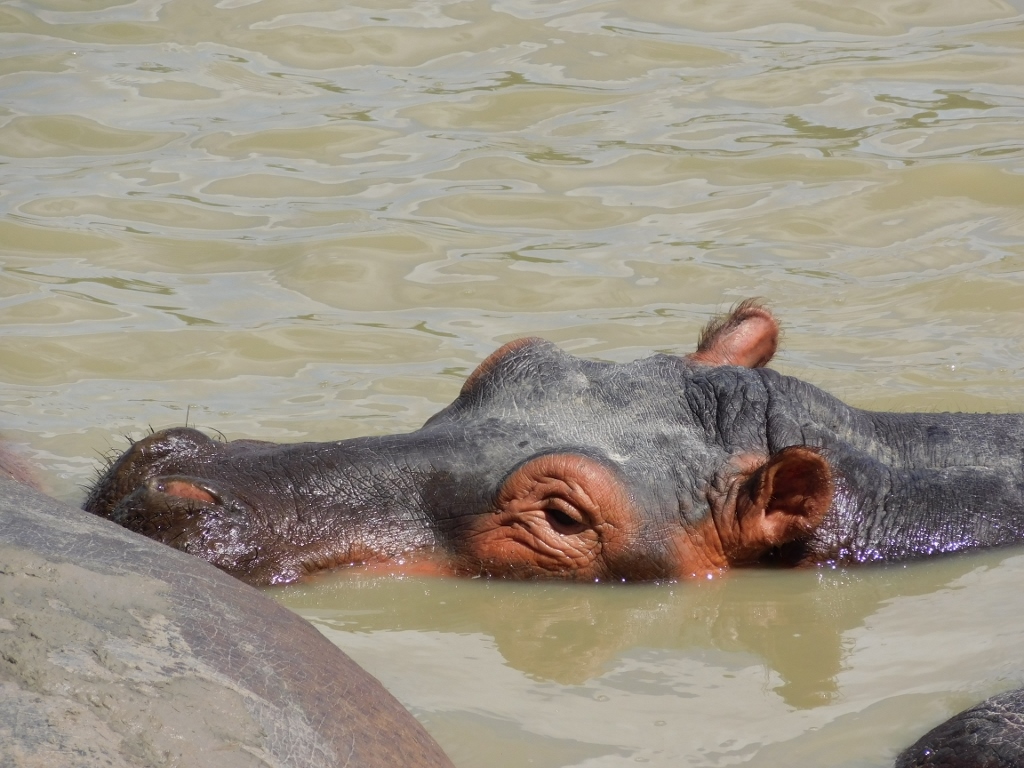 Hippopotamuses in the Mikumi NP
Hippopotamuses in the Mikumi NP
I could also spot again some Nile crocodiles here.
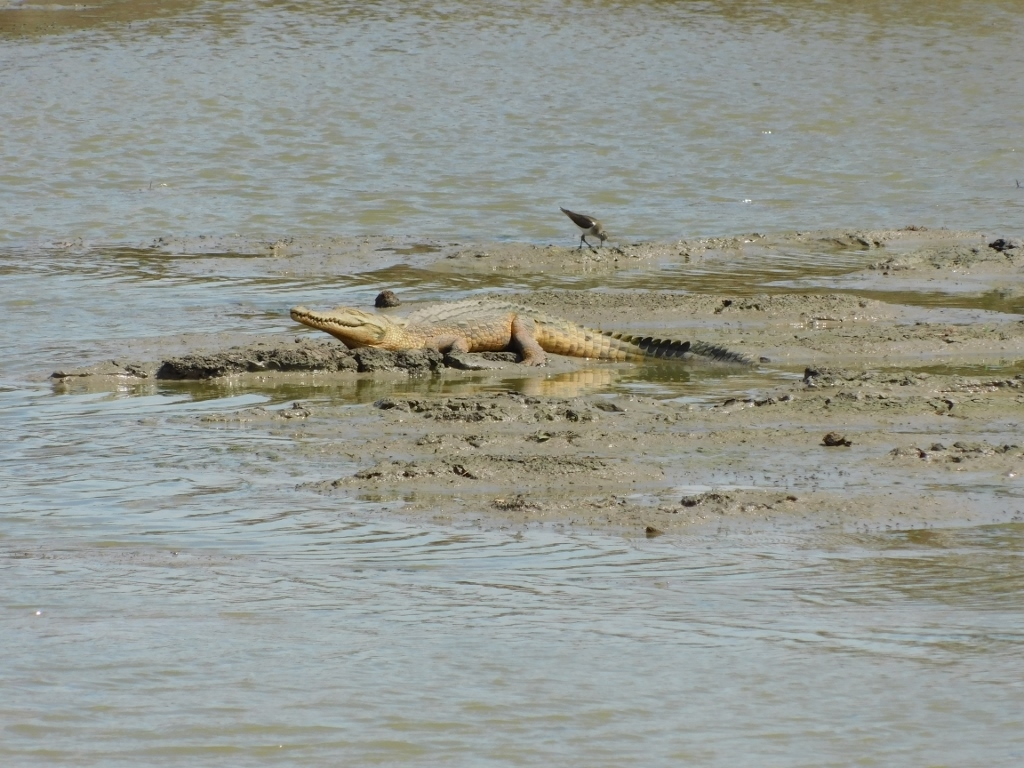 Nile crocodile in the Mikumi NP
Nile crocodile in the Mikumi NP
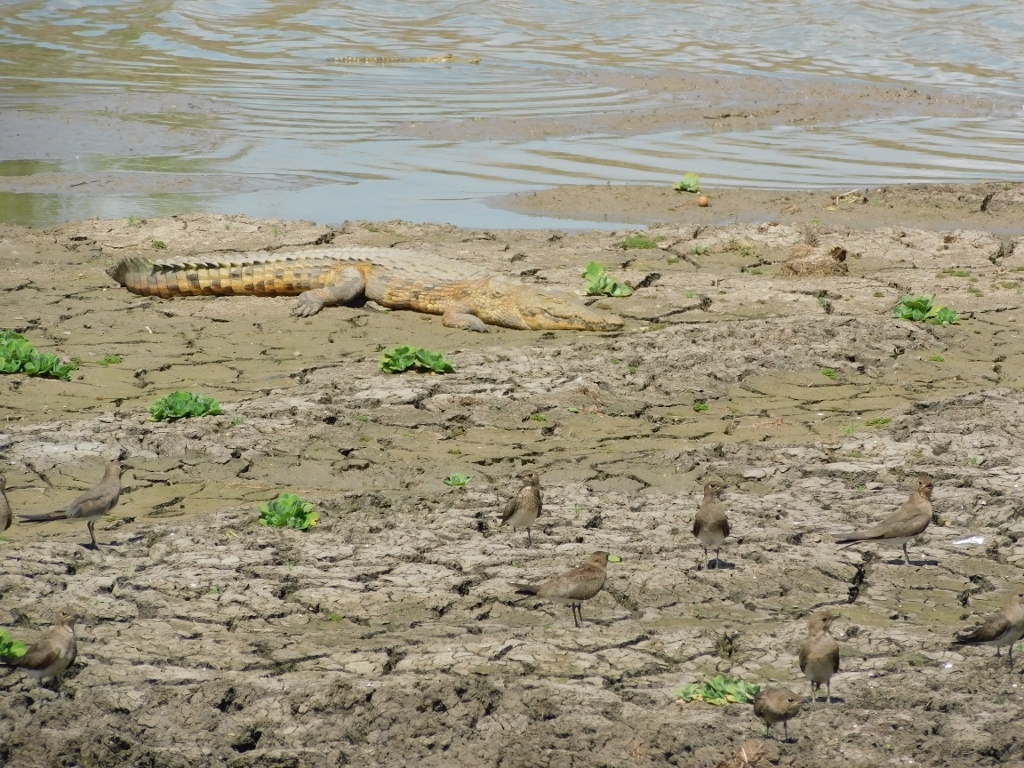 Nile crocodile in the Mikumi NP
Nile crocodile in the Mikumi NP
In the previous photo, in front of the crocodile, you can see several collared pratincoles (Glareola pratincola). Very soon, a whole flock of these birds began to fly around the pond, only to move away to who knows where.
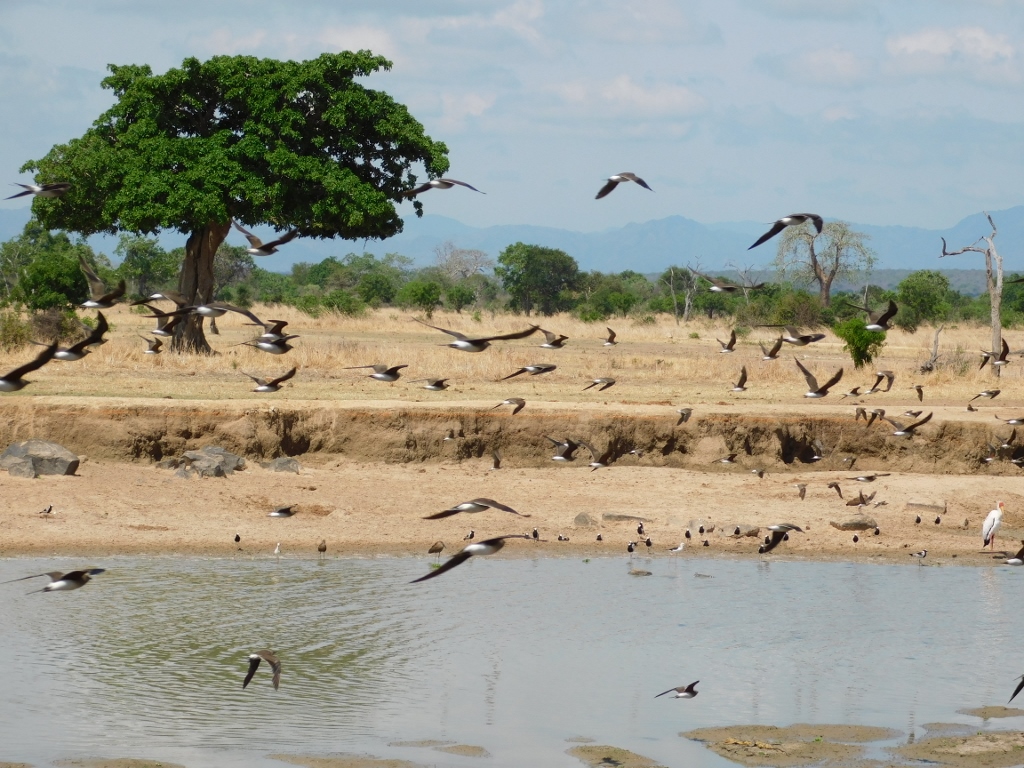 Flock of collared pratincoles in the Mikumi NP
Flock of collared pratincoles in the Mikumi NP
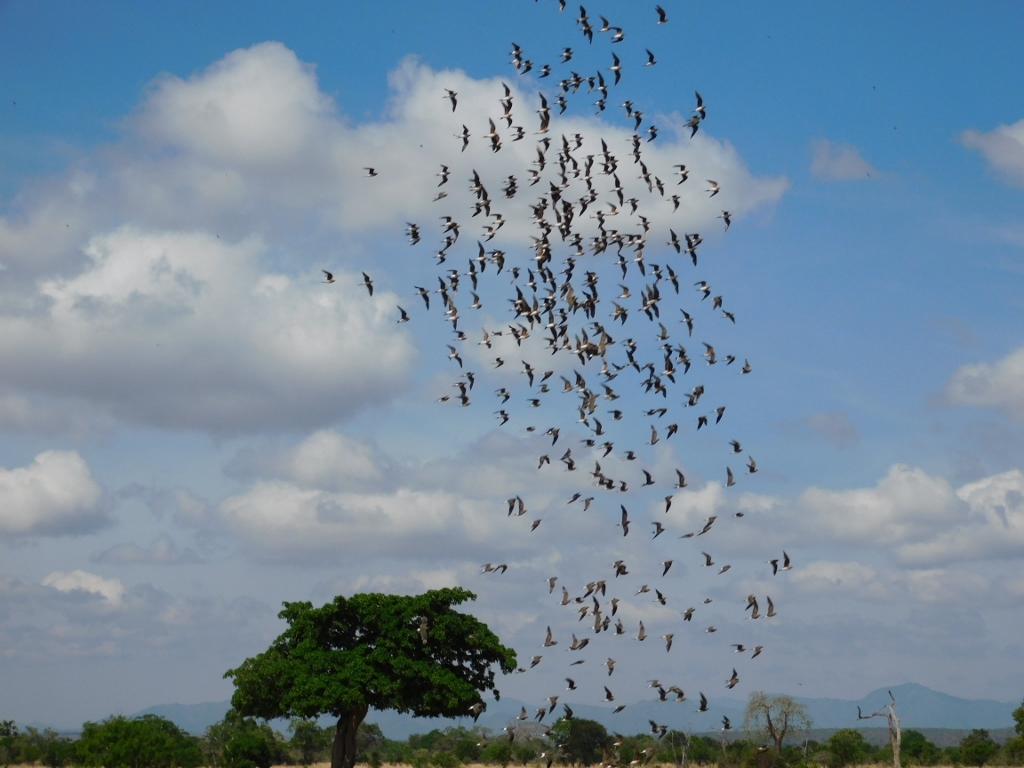 Flock of collared pratincoles in the Mikumi NP
Flock of collared pratincoles in the Mikumi NP
But here, next to the pond, there are also much smaller and less conspicuous animals. My only problem was getting them to settle in one place so that I could take a photo of them.
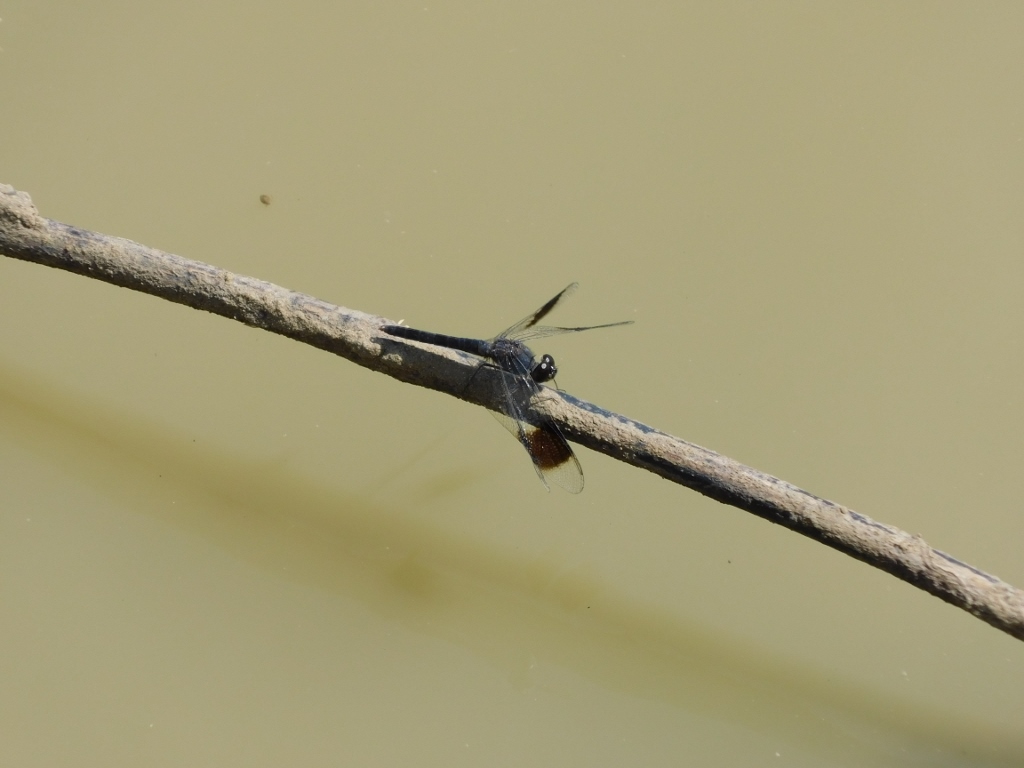 Dragonfly in the Mikumi NP
Dragonfly in the Mikumi NP
Then we climbed back into the vehicle and continued with our tour. The driver/guide knew exactly where different things could be seen and stopped accordingly. In one of the clearings, we could spot a southern ground hornbill (Bucorvus leadbeateri).
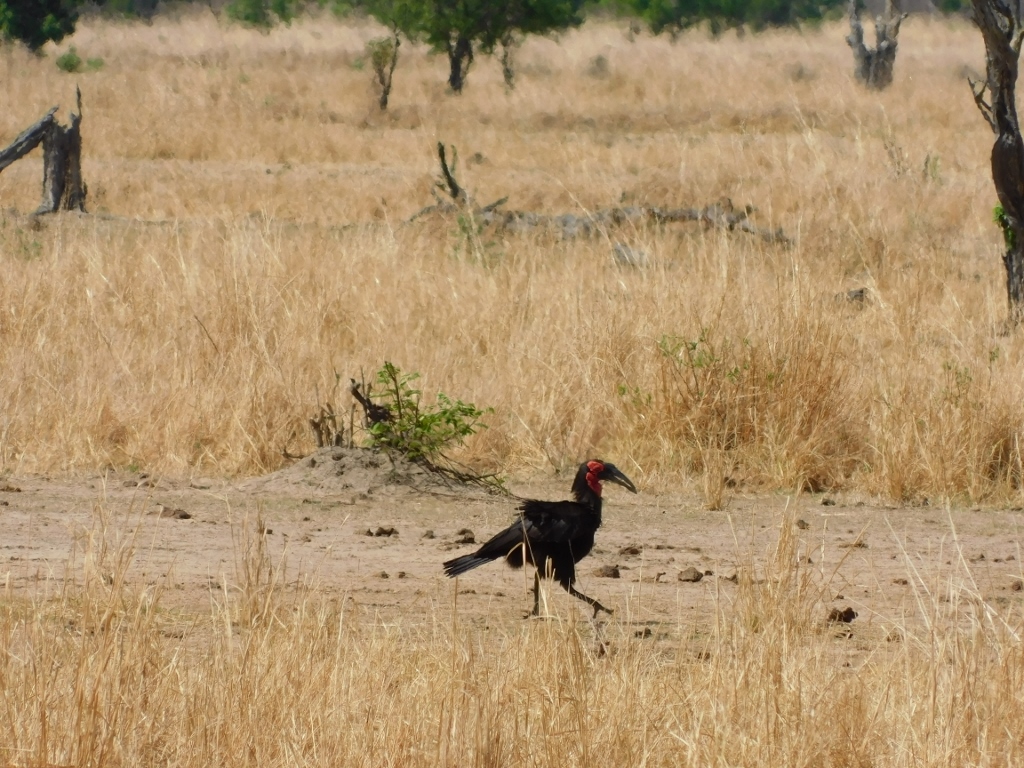 Southern ground hornbill
Southern ground hornbill
Among other things, in the Mikumi National Park you can see baobabs, as well as other trees, but some areas are mainly dominated by grasses.
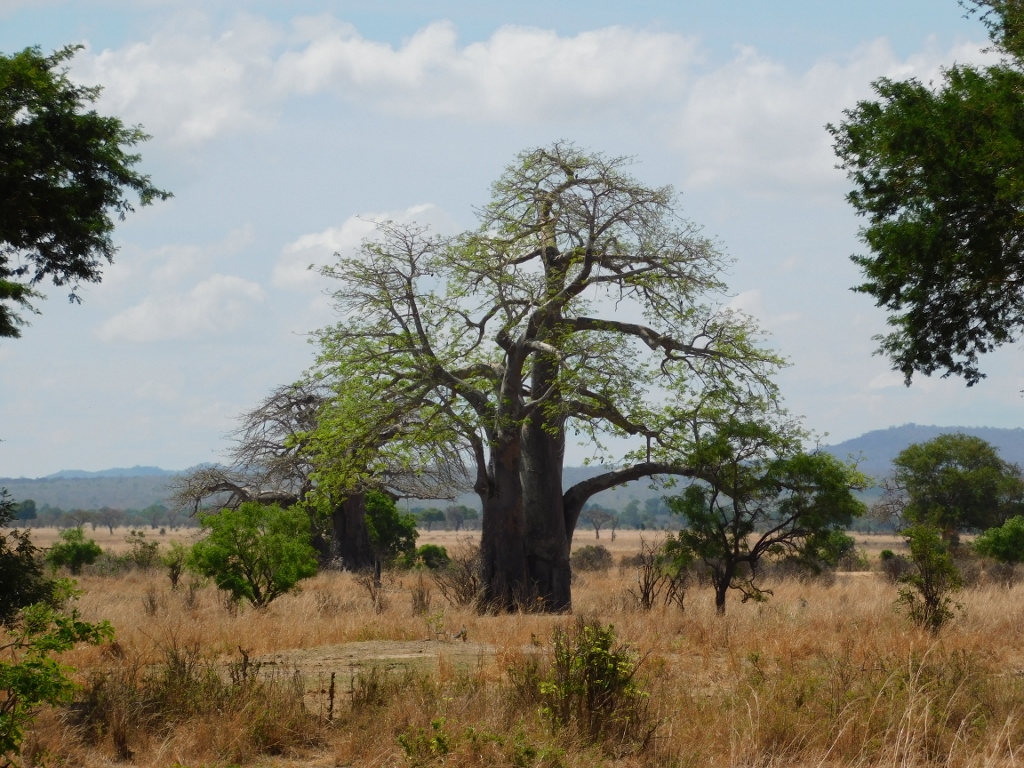 Mikumi NP
Mikumi NP
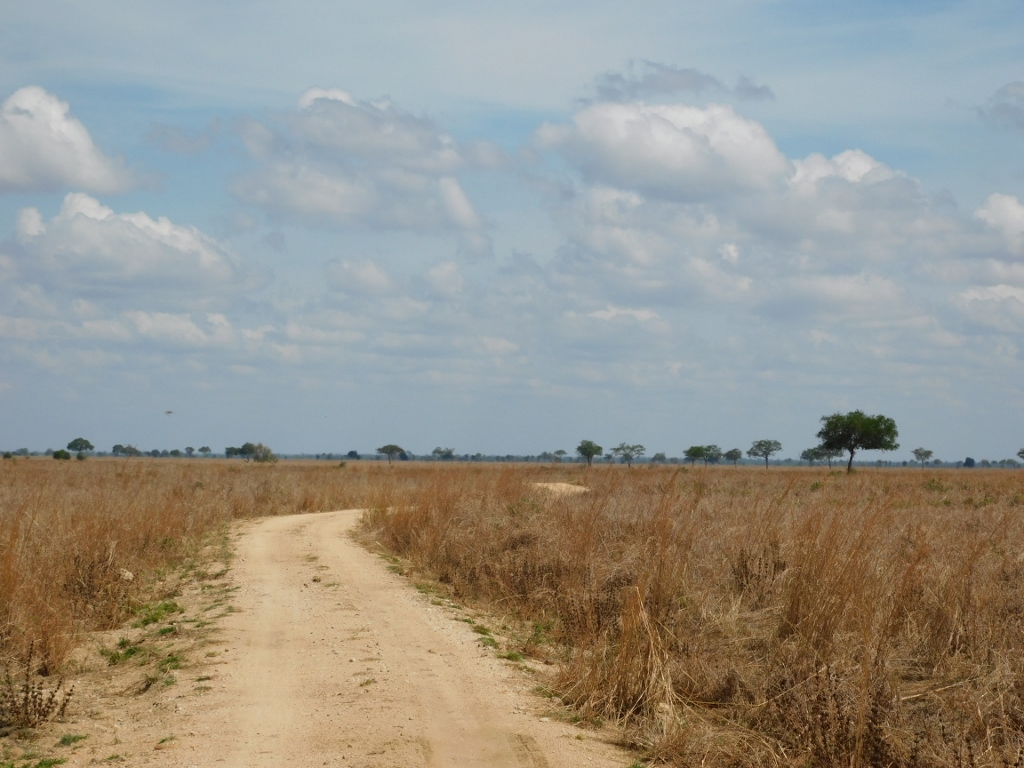 Mikumi NP
Mikumi NP
It was late in the morning and we who were in the car were not too hot because the fully open car was moving almost all the time, so it felt like the wind was blowing, but the animals certainly didn’t have that luxury like us and some of them intensively sought shade.
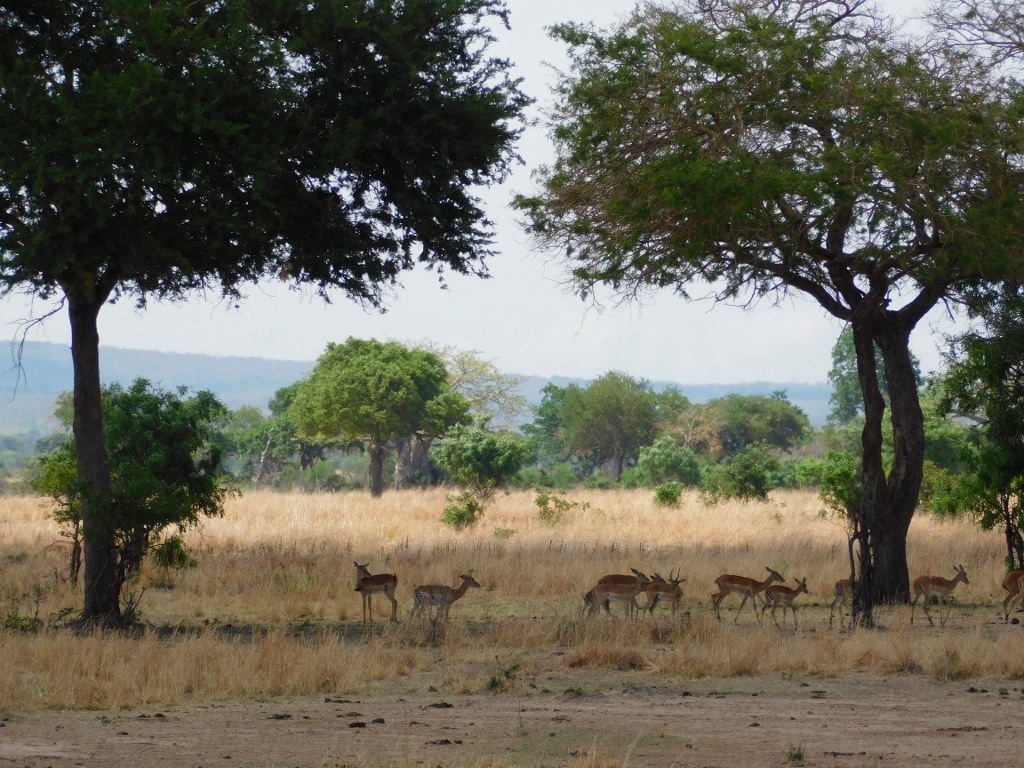 Impalas in the shade
Impalas in the shade
The next photo illustrates this heat quite well. The picture is blurry not because my camera was out of focus, but because there was oppressive heat that emanated from the ground.
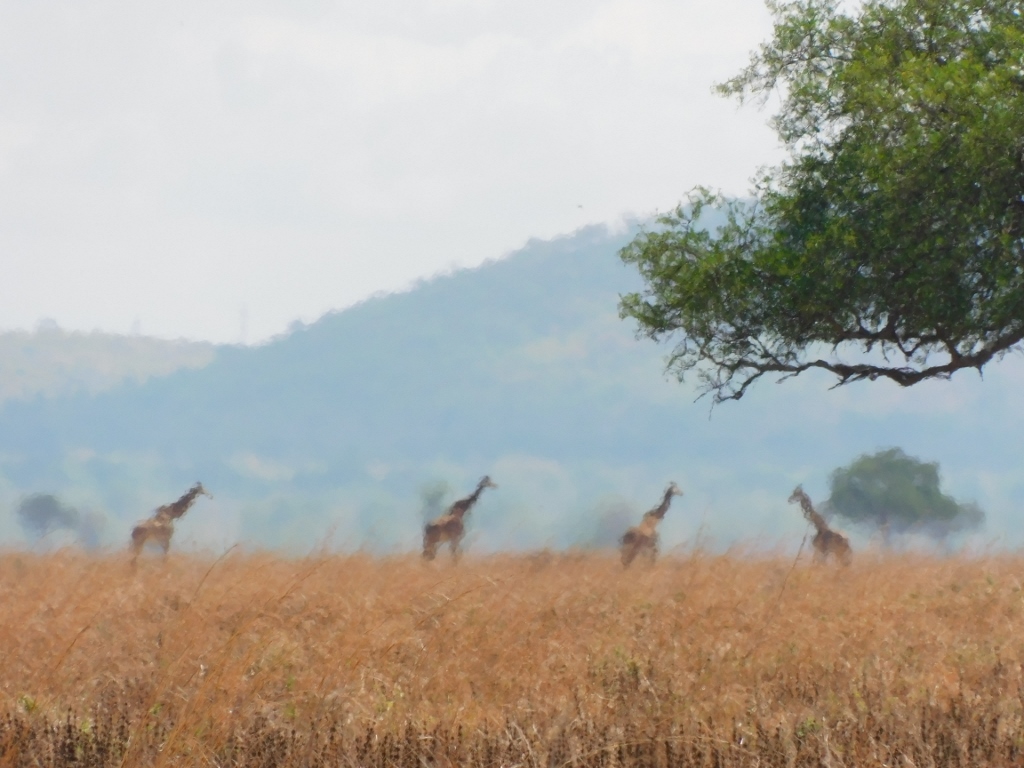 The heat in the Mikumi National Park
The heat in the Mikumi National Park
Some hills could be seen in the distance, but the part we were visiting was mostly flat. However, when I asked him if cheetahs lived here, the guide told me they did not, as they need much larger plains than the ones that exist here.
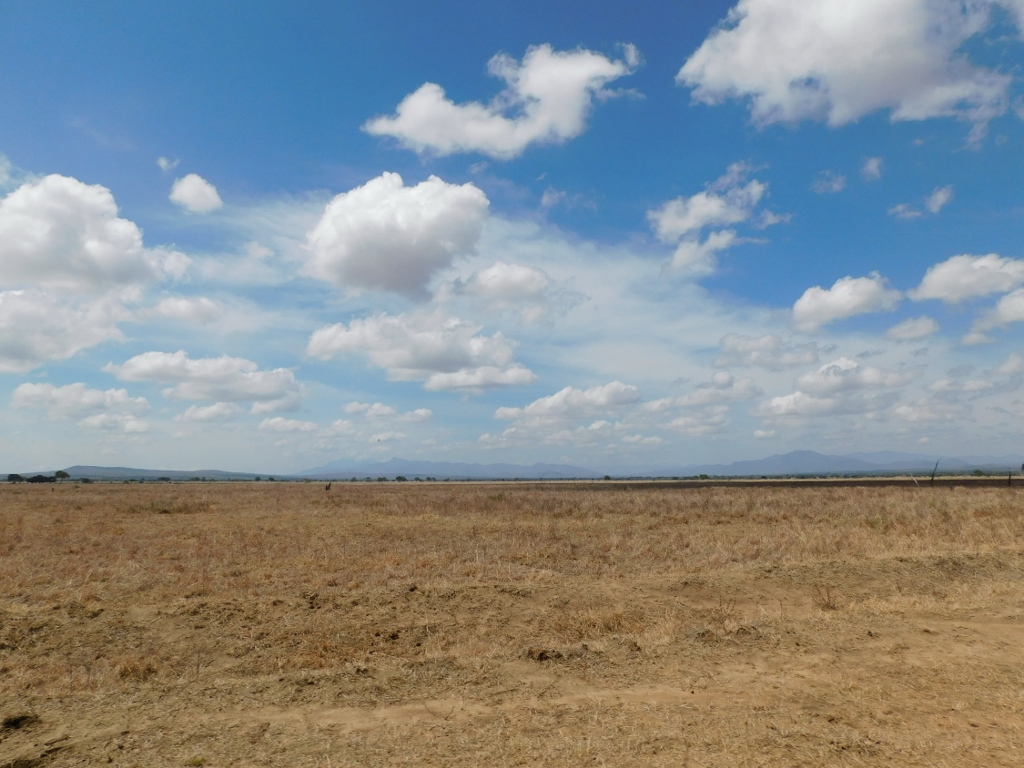 Mikumi NP
Mikumi NP
Soon, in two different places, we encountered a female and then a male cape bushbuck (Tragelaphus sylvaticus).
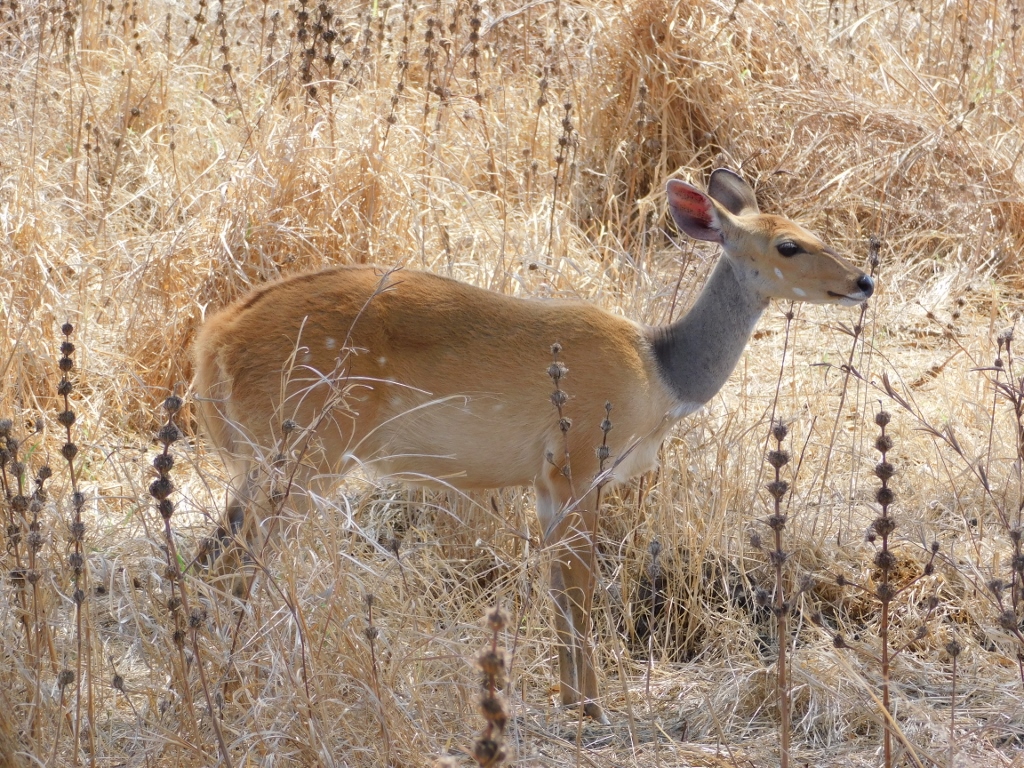 Female cape bushbuck
Female cape bushbuck
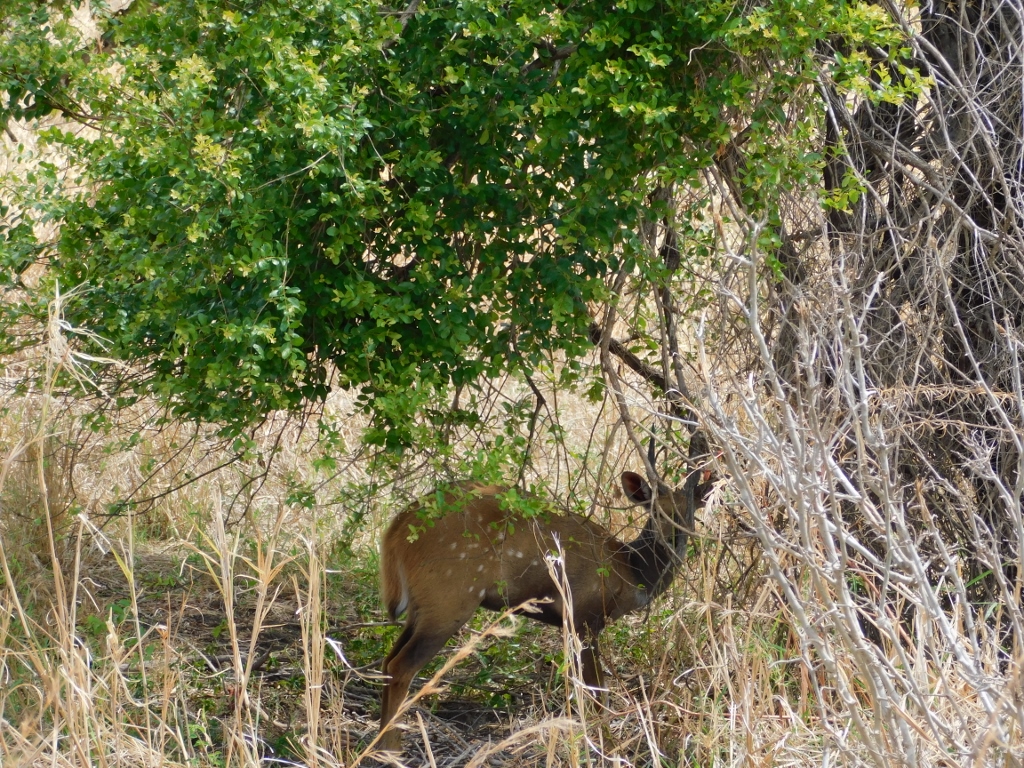 Male cape bushbuck
Male cape bushbuck
And then, in a clearing we spotted some common warthogs.
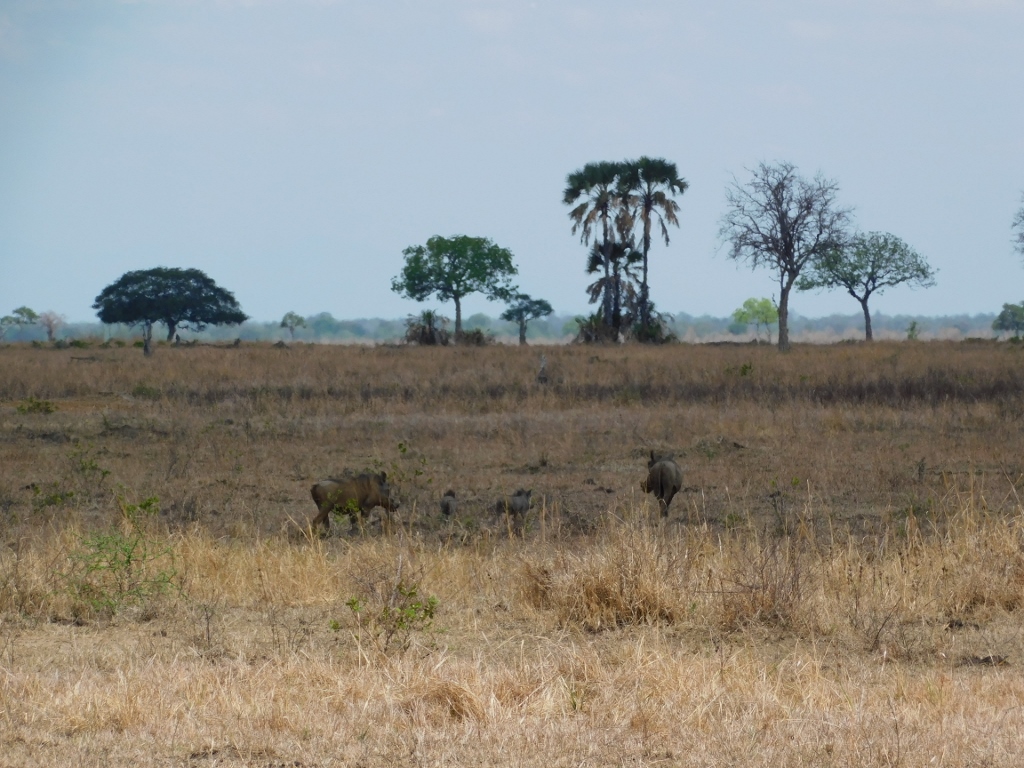 Common warthogs
Common warthogs
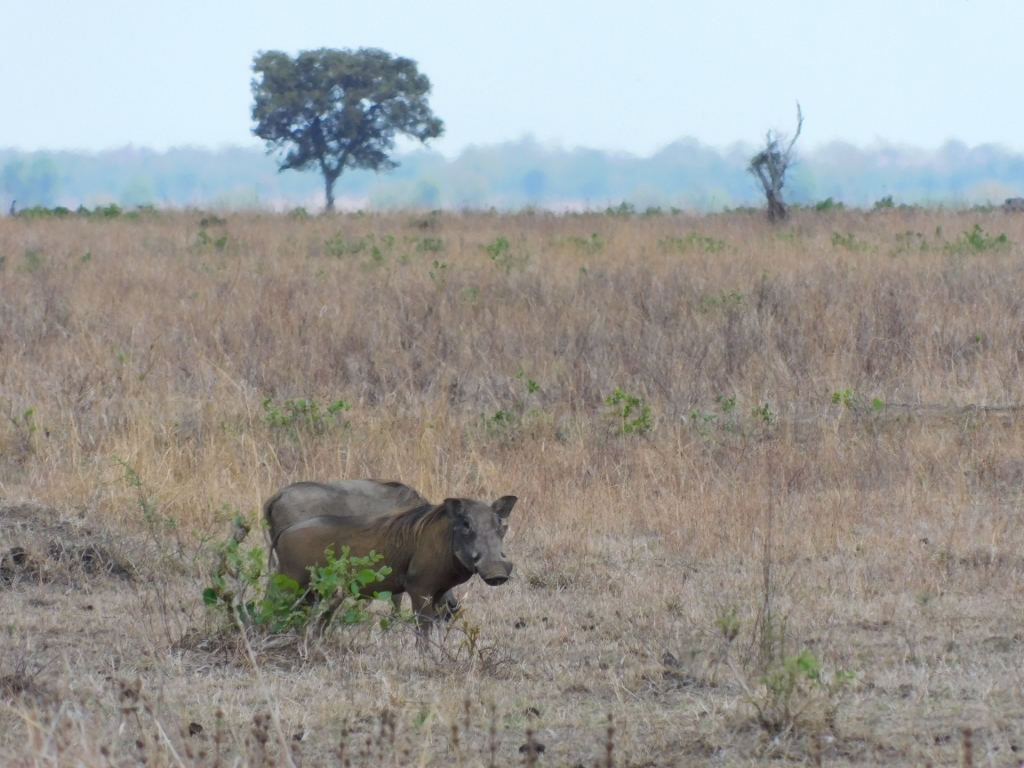 Common warthogs
Common warthogs
As it can be seen, the landscapes were constantly changing – some grassy clearings and then some parts with sparse trees. So at one point we encountered a smaller herd of impalas, but there was also a zebra. I was really happy to see it, too.
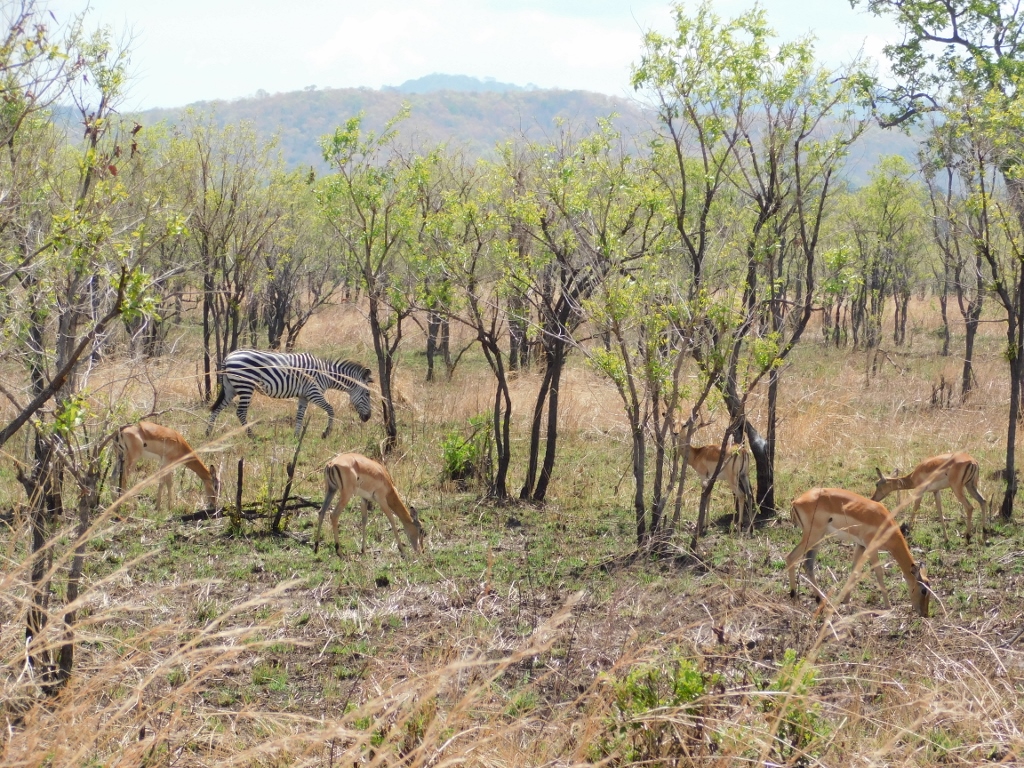 Impalas and a zebra
Impalas and a zebra
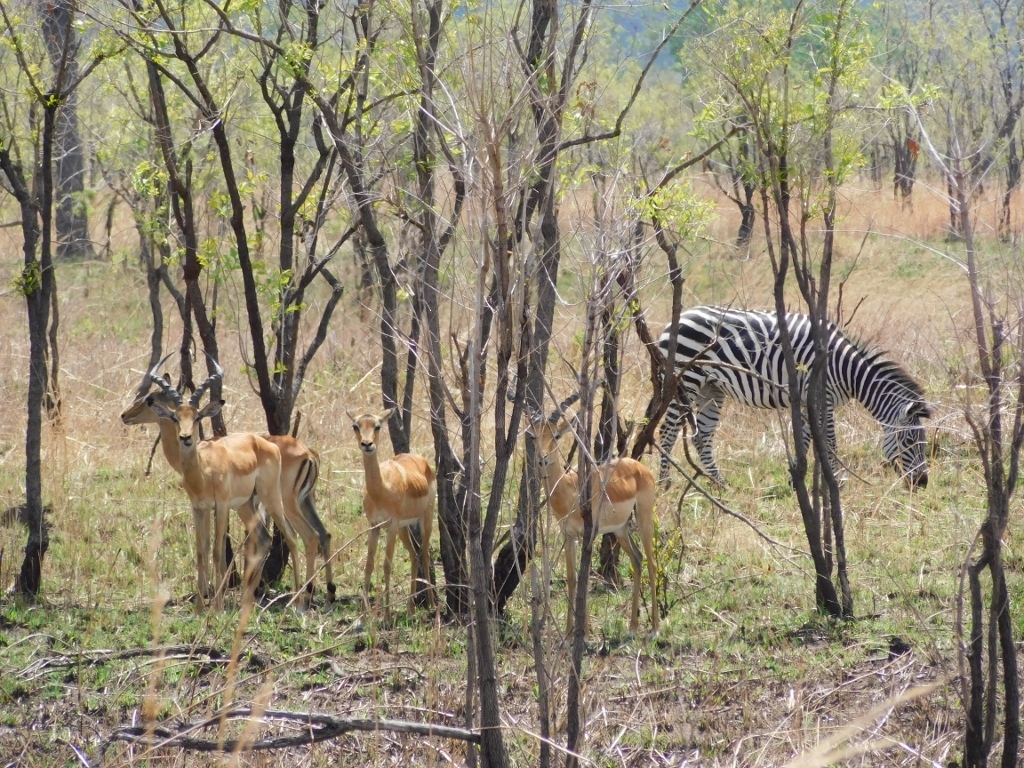 Impalas and a zebra
Impalas and a zebra
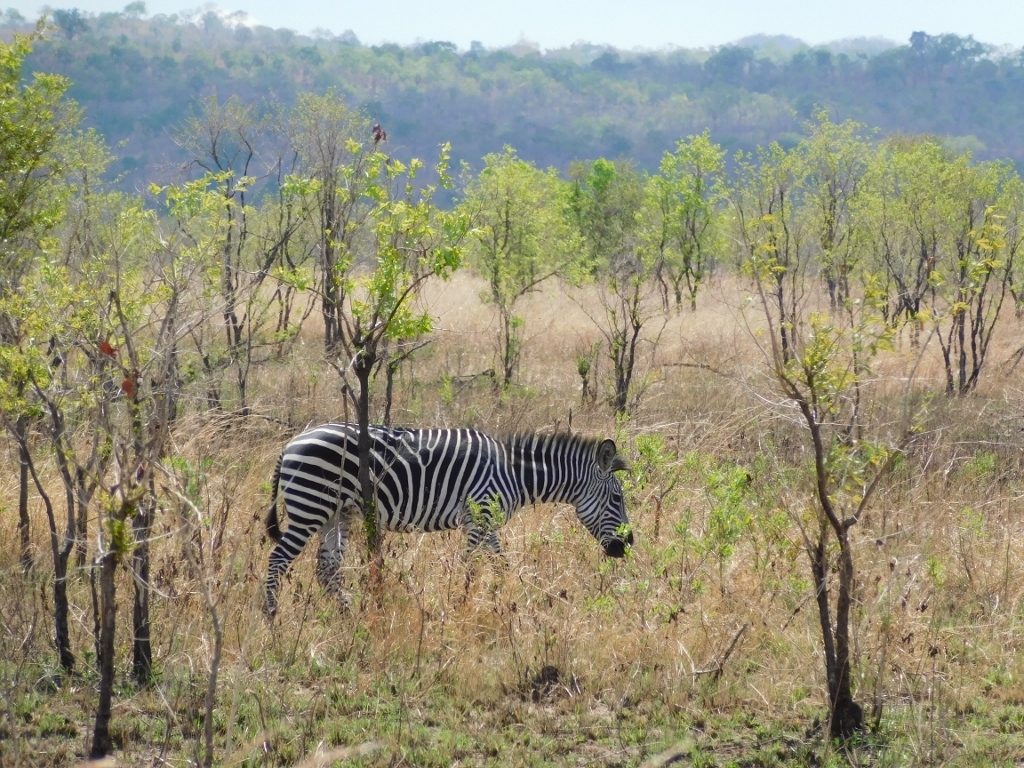 Zebra
Zebra
And then in the distance we saw a vulture circling above the ground. It was a clear sign of what had happened there, so all the vehicles that were in the vicinity suddenly left the main road and headed across the savannah.
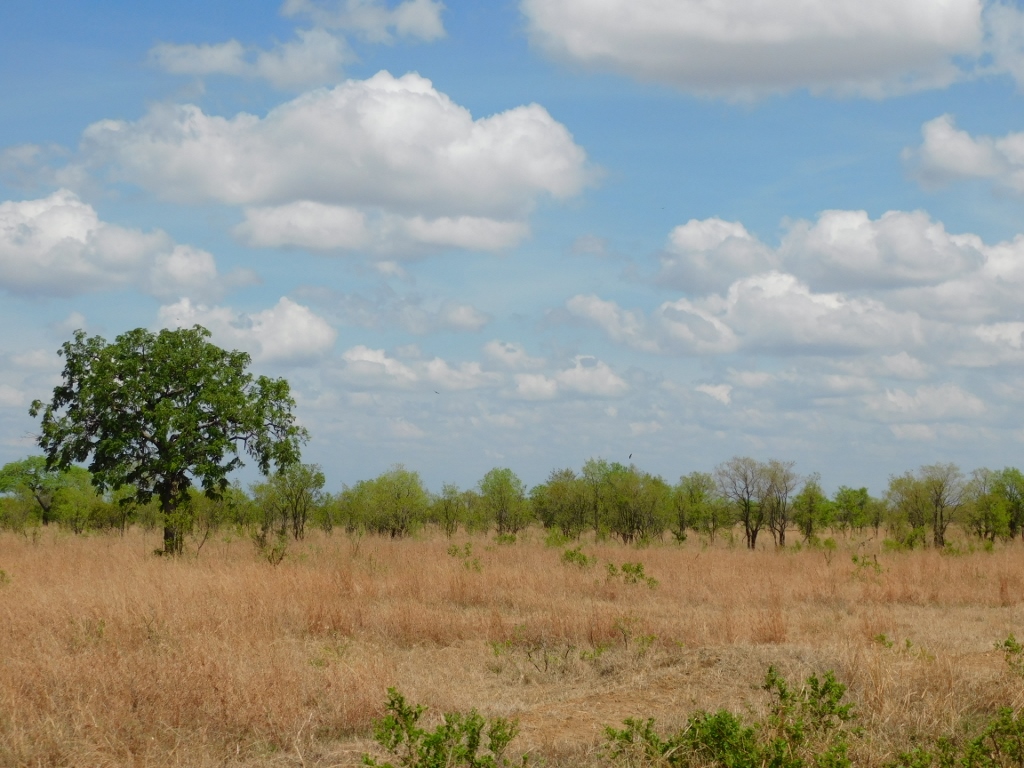 Vulture in the distance
Vulture in the distance
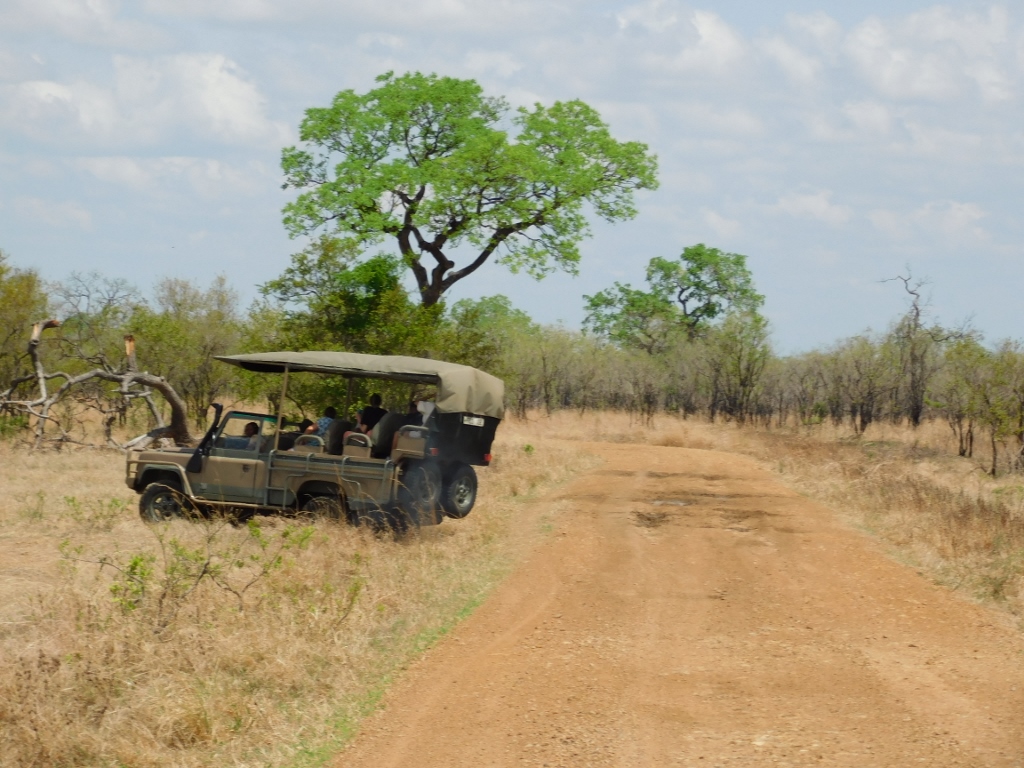 Let’s see what has happened
Let’s see what has happened
First we got to a flock of vultures and a specific type of stork.
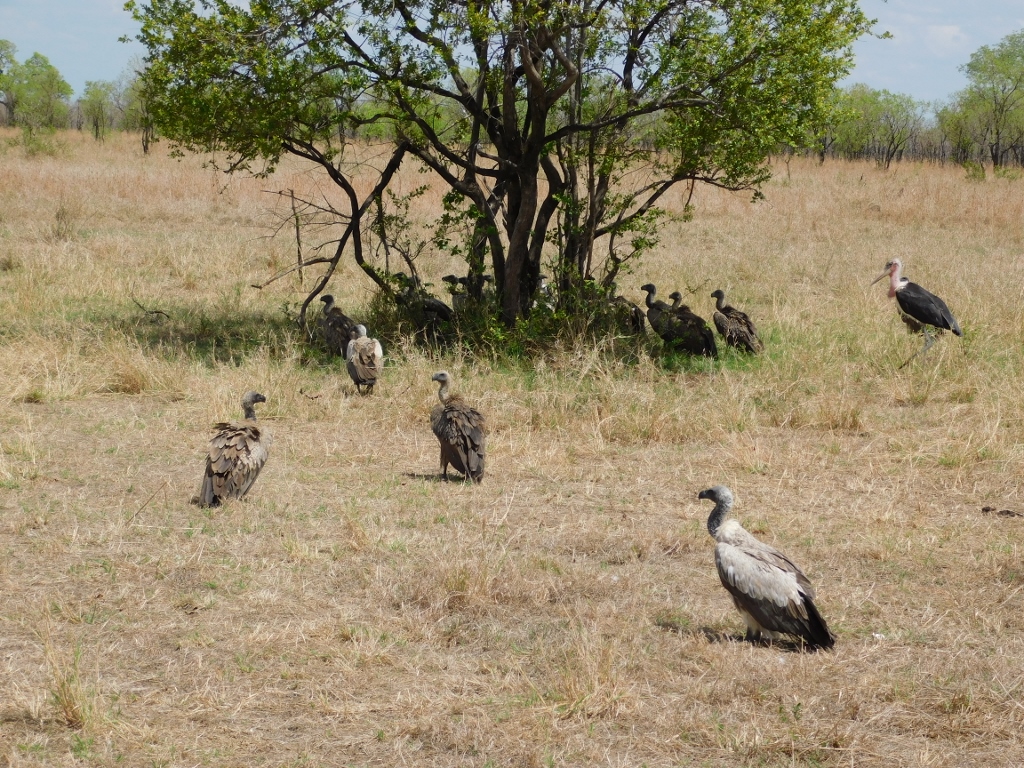 We are waiting in the shade to see what will be the leftovers
We are waiting in the shade to see what will be the leftovers
As for the vultures, this was the white-backed vulture (Gyps africanus) and as for the stork, this was the marabu stork (Leptoptilos crumeniferus).
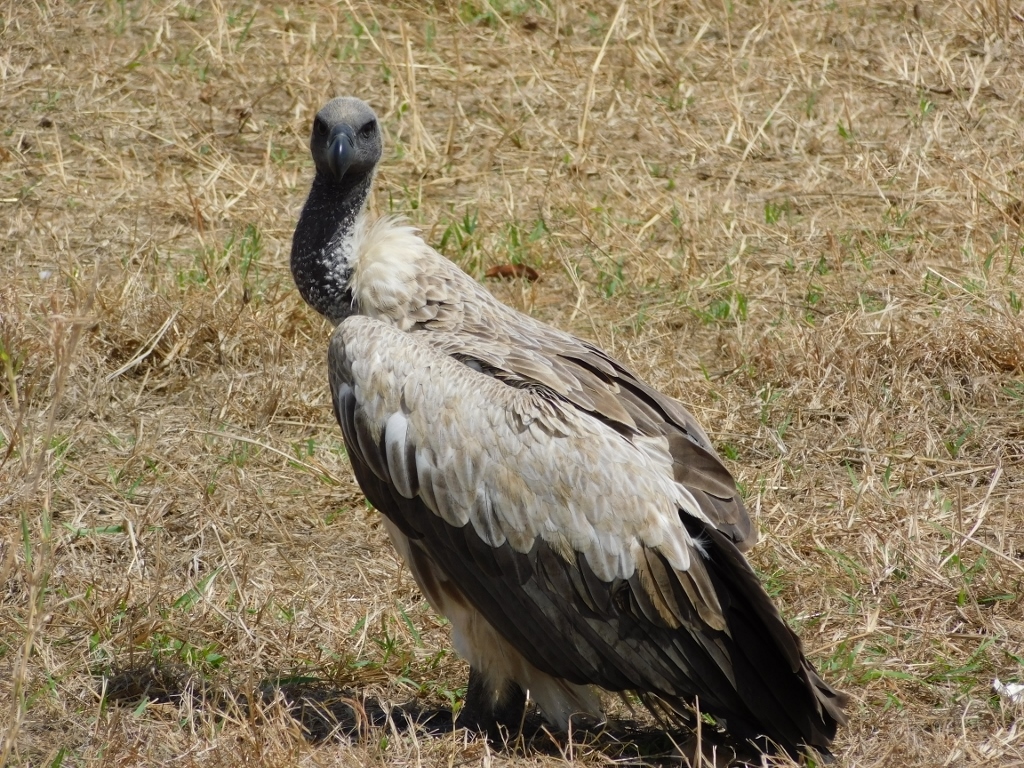 White-backed vulture
White-backed vulture
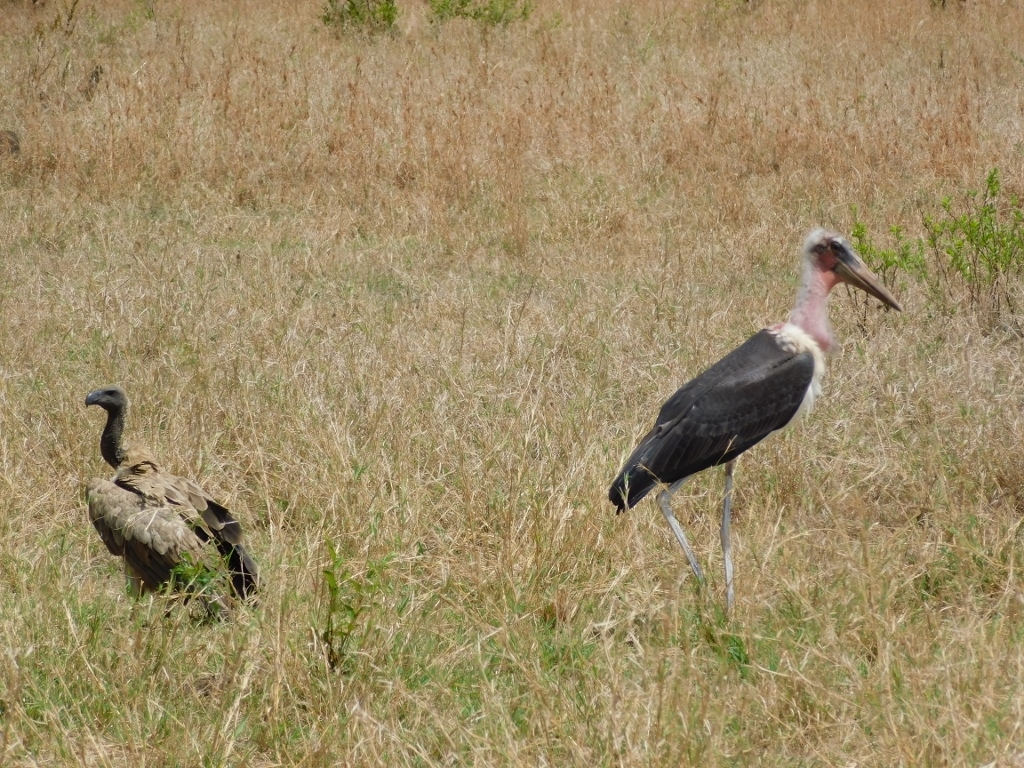 White-backed vulture and marabu stork
White-backed vulture and marabu stork
It was clear that some animal had been freshly killed and this was confirmed by a new pack of lions resting in the shade after a hard day’s hunting and eating. Once again, the lions were full and we were able to get surprisingly close to them again.
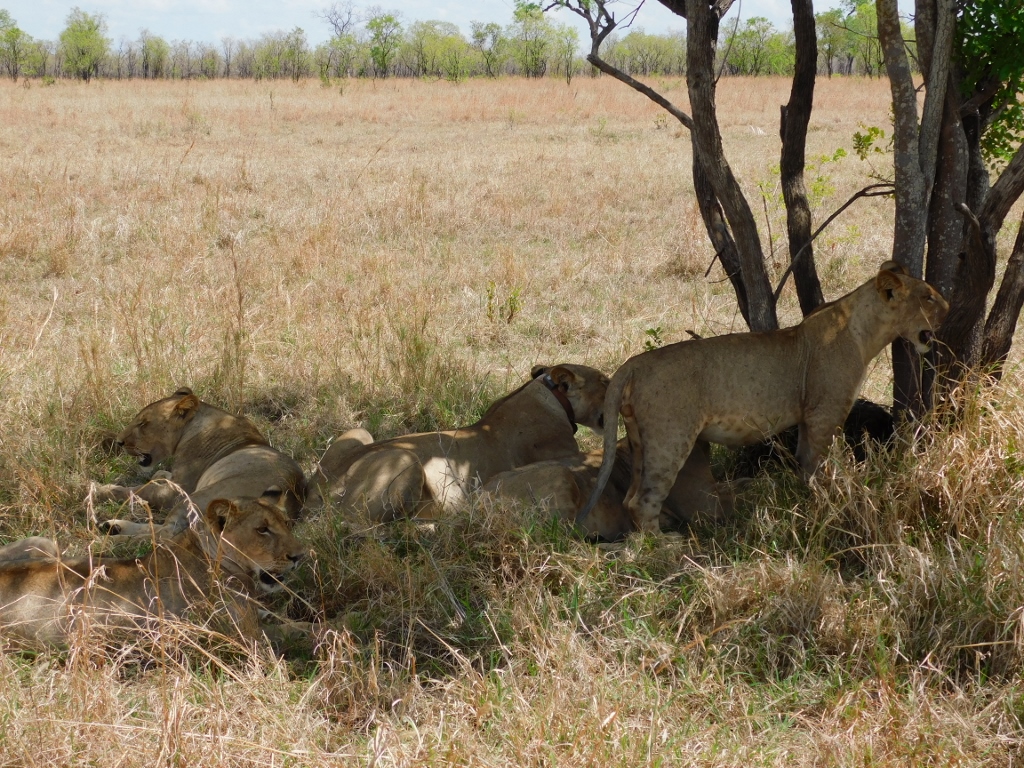 Pack of lions after lunch
Pack of lions after lunch
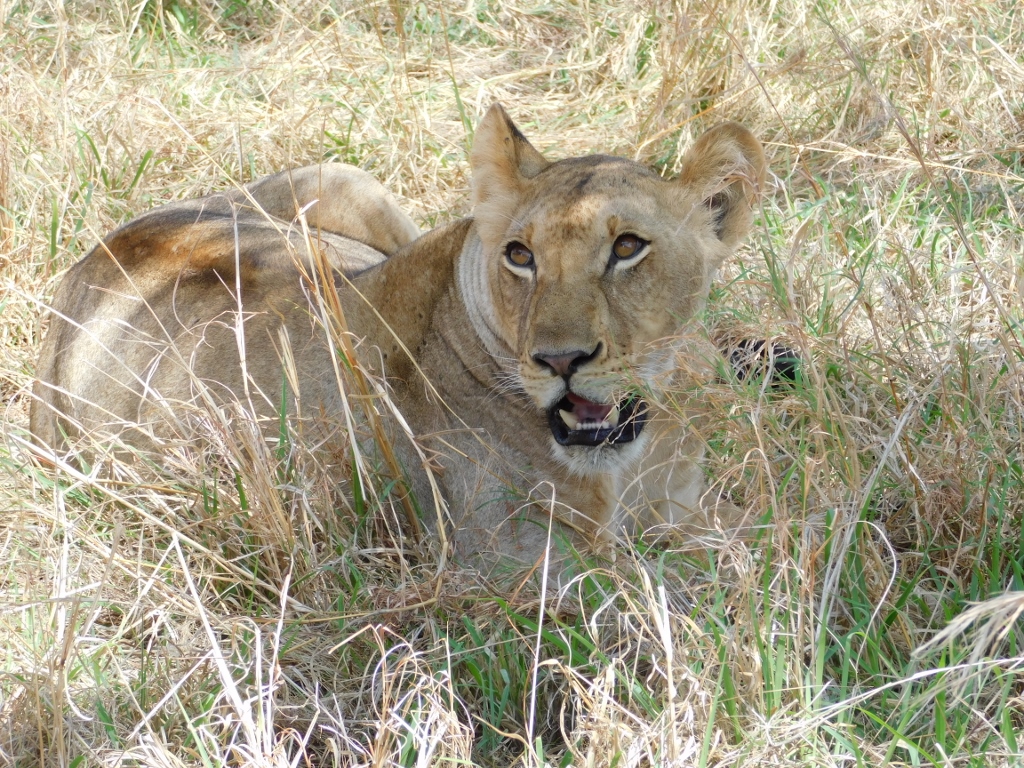 One of the lionesses
One of the lionesses
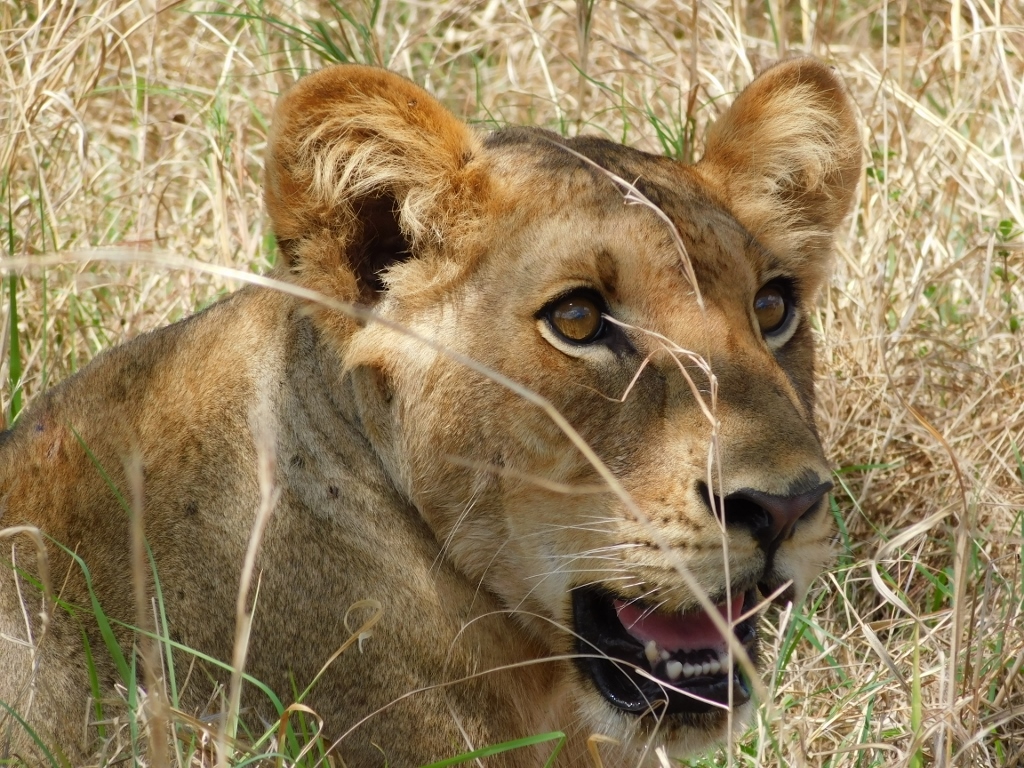 Young lion
Young lion
While several vehicles with tourists were stationed around the pack that were resting and digesting the lunch, one lioness decided that she had had enough of everything, so she calmly walked to another place. This picture shows how close the vehicles are to the animals and how much the animals don’t even bother with people because they are probably used to them.
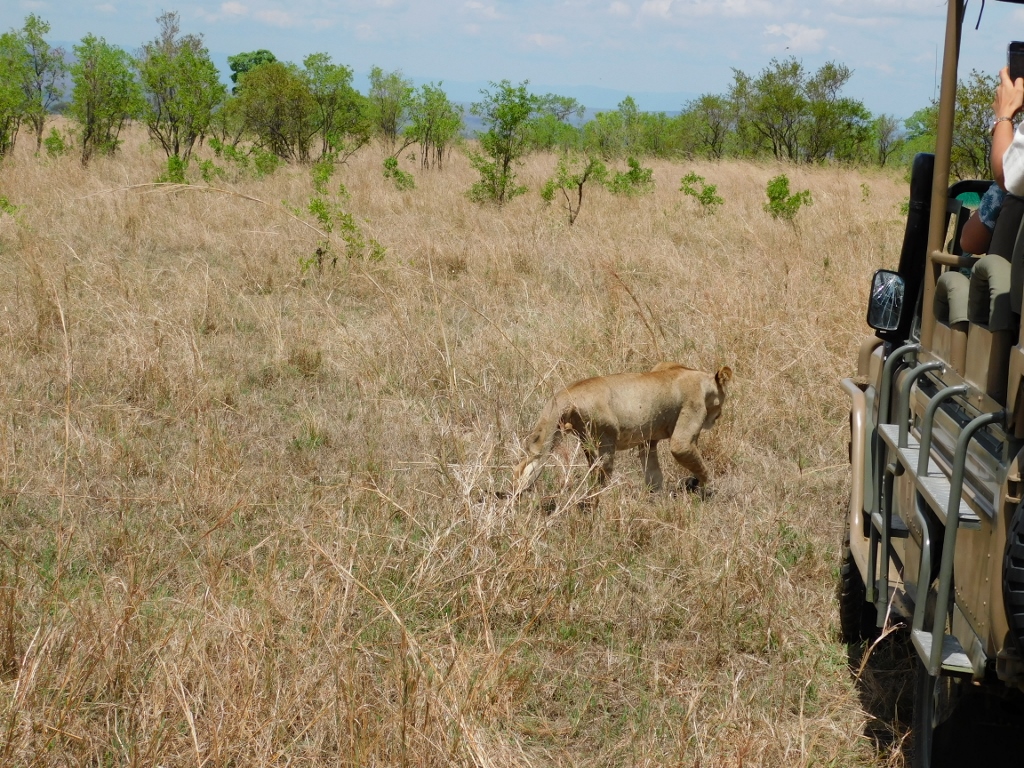 Lioness that has had enough of it
Lioness that has had enough of it
Our vehicle then moved again to get a better view of the lions and I thoroughly enjoyed the experience.
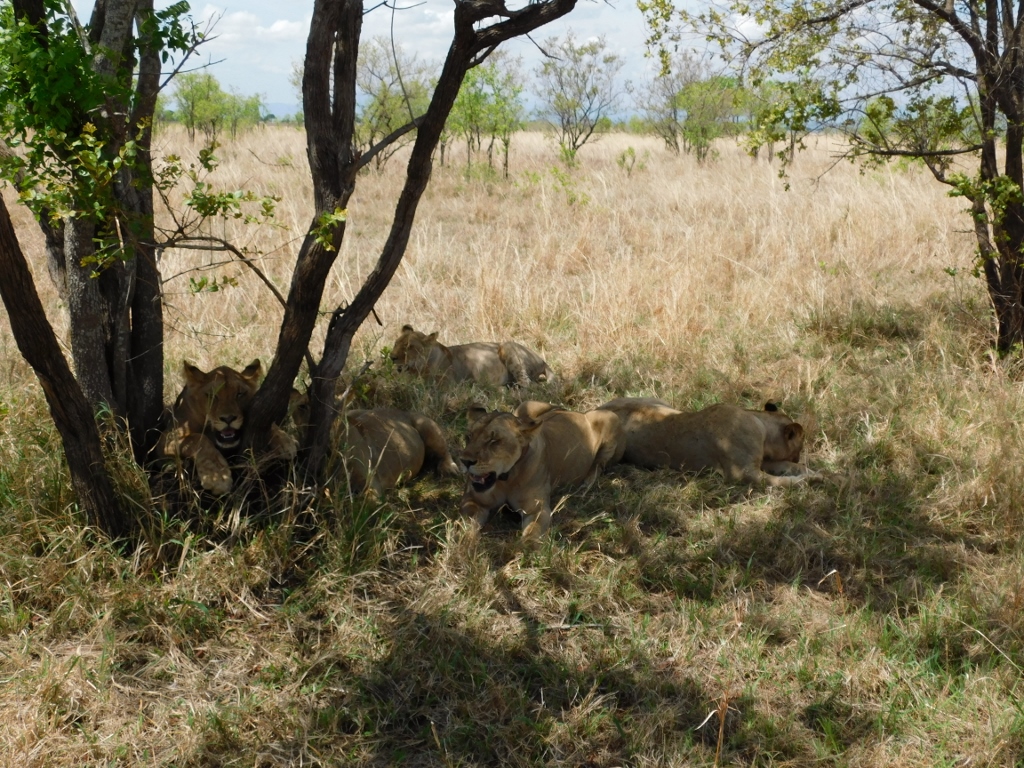 Pack of lions after lunch
Pack of lions after lunch
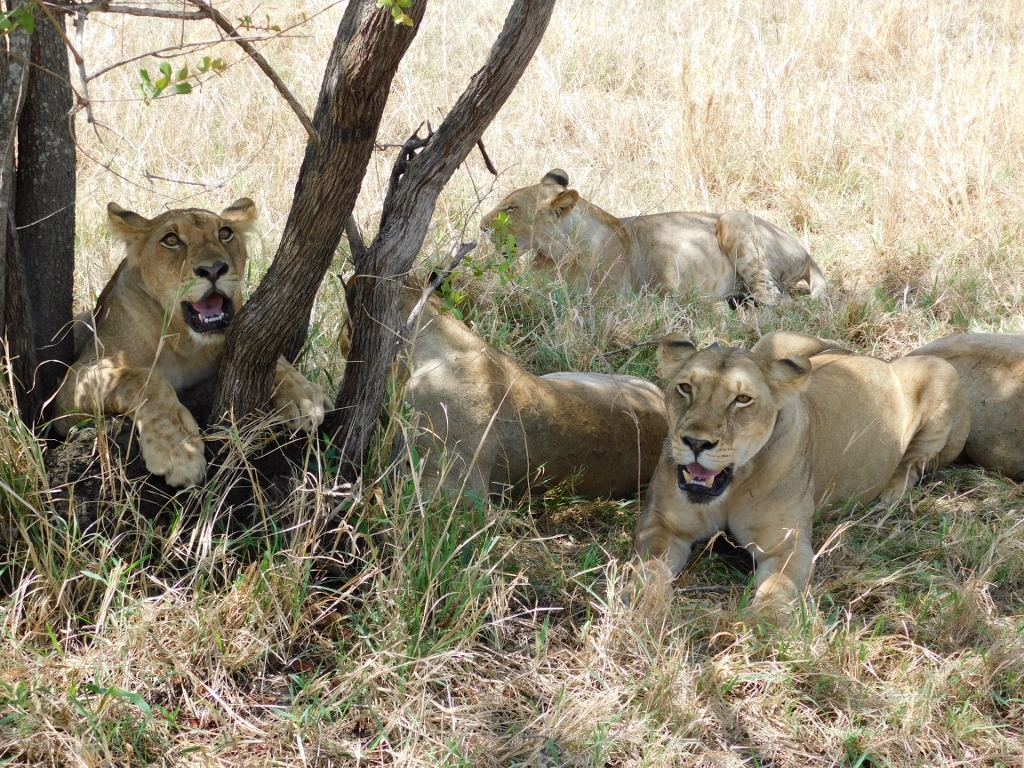 Pack of lions after lunch
Pack of lions after lunch
I found a young lion particularly cute (I could guess its approximate age by the size of its fangs). While leaning against a tree, it was posing wonderfully and I felt like I was a professional wildlife photographer.
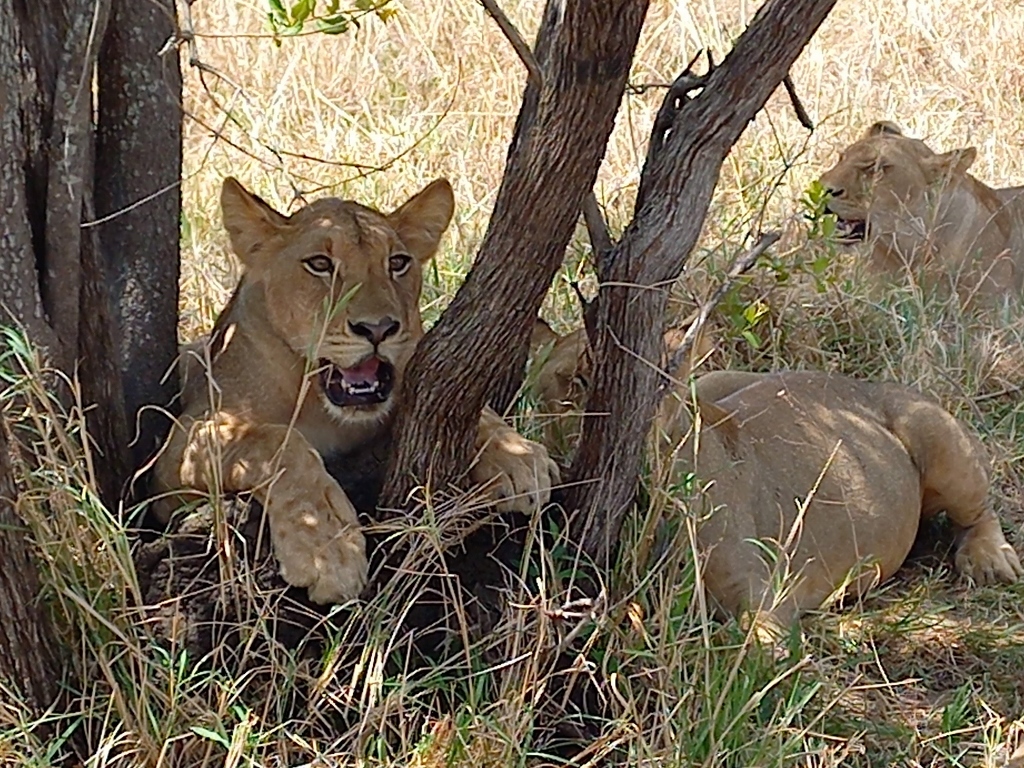 Young lion
Young lion
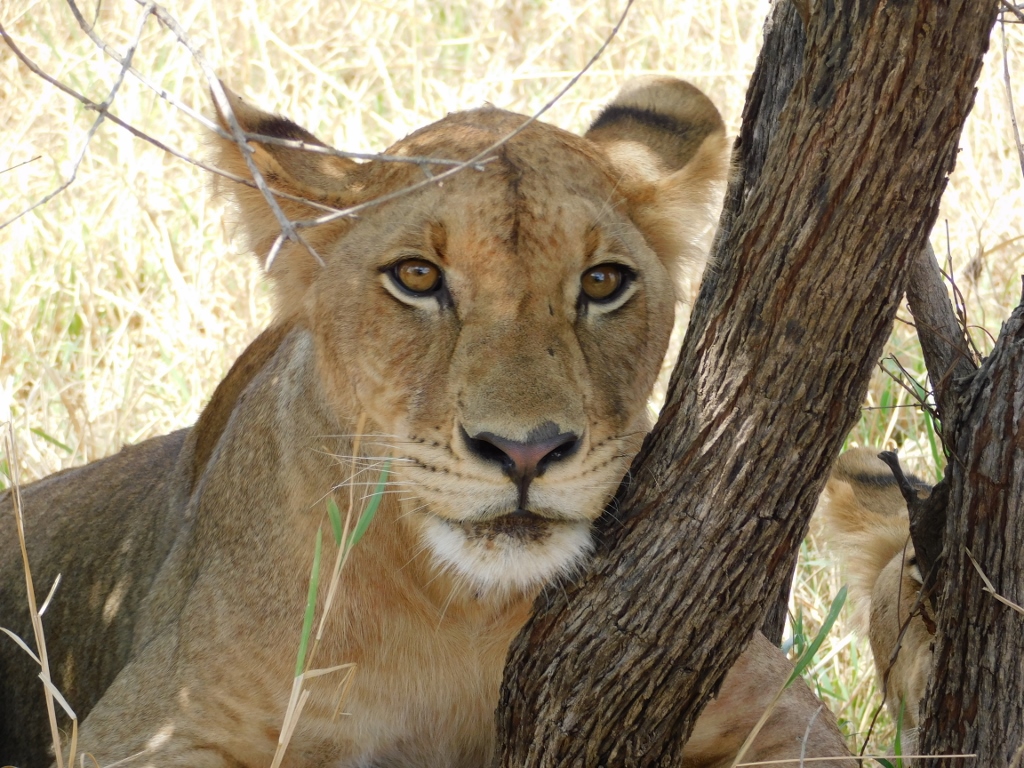 Young lion
Young lion
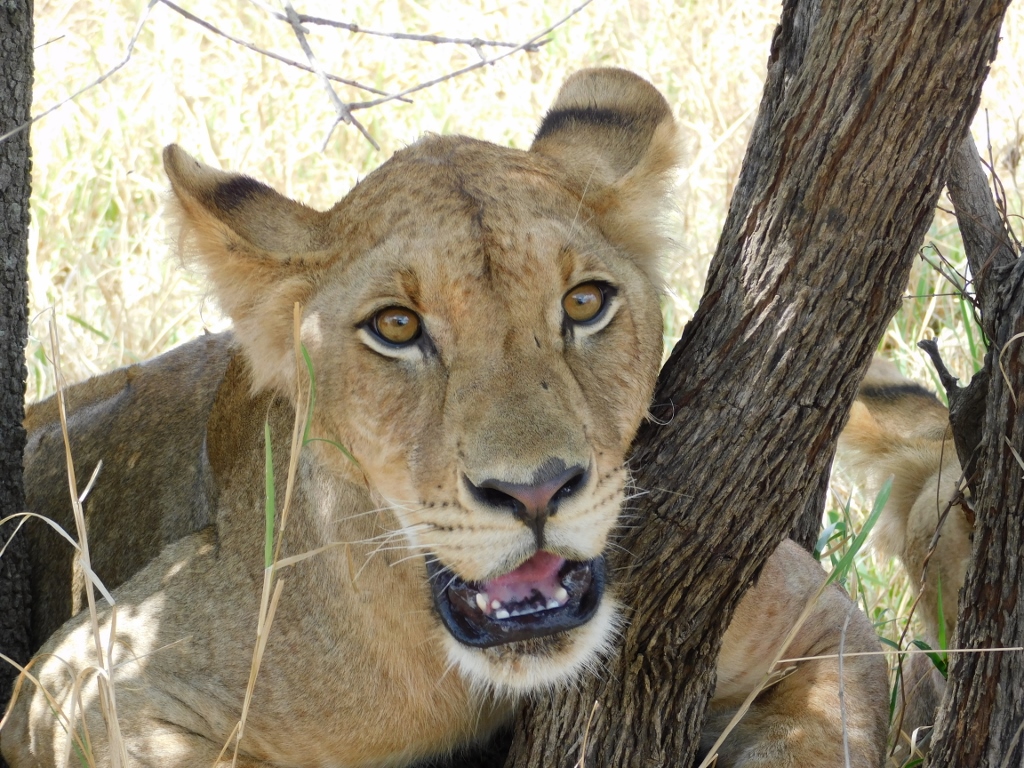 Young lion
Young lion
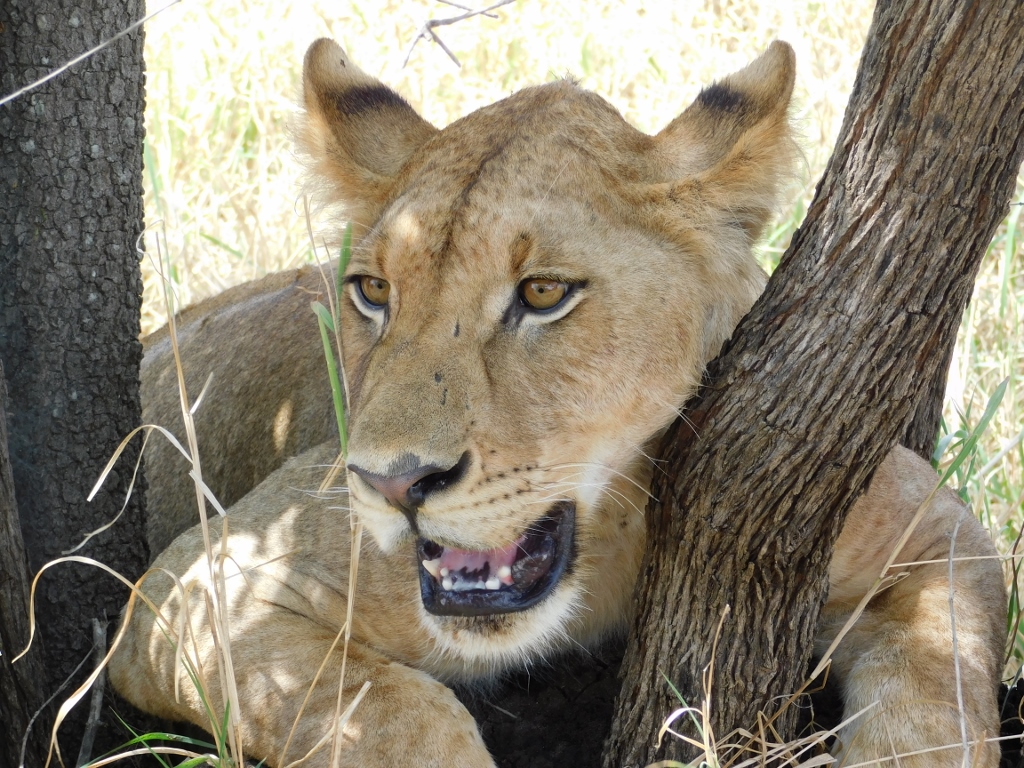 Young lion
Young lion
As wonderful as it was to watch the lions from a few meters away, at some point we did move away and first returned to those vultures who were still patiently waiting in the shade for the situation to calm down and for the visitors to move away so they could also take their turn.
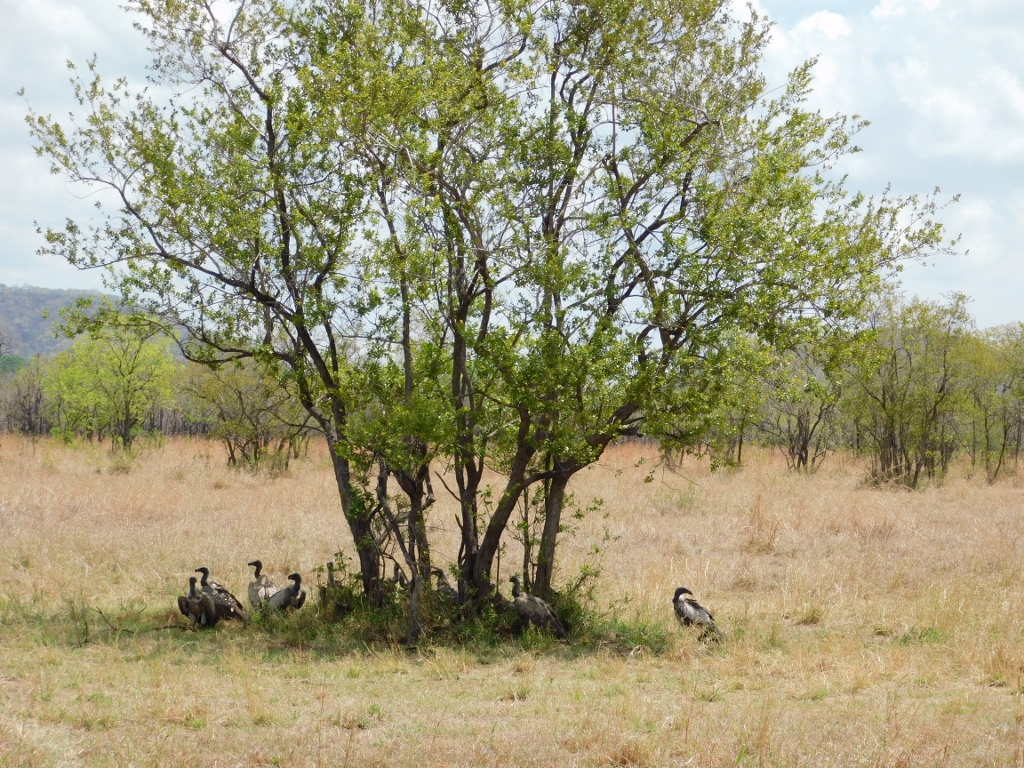 Vultures in the shade
Vultures in the shade
I have already said that this was the white-backed vulture, for which it is characteristic that it nest in trees, unlike the griffon vulture (found in Serbia, for instance) or the condor that nest on the cliffs.
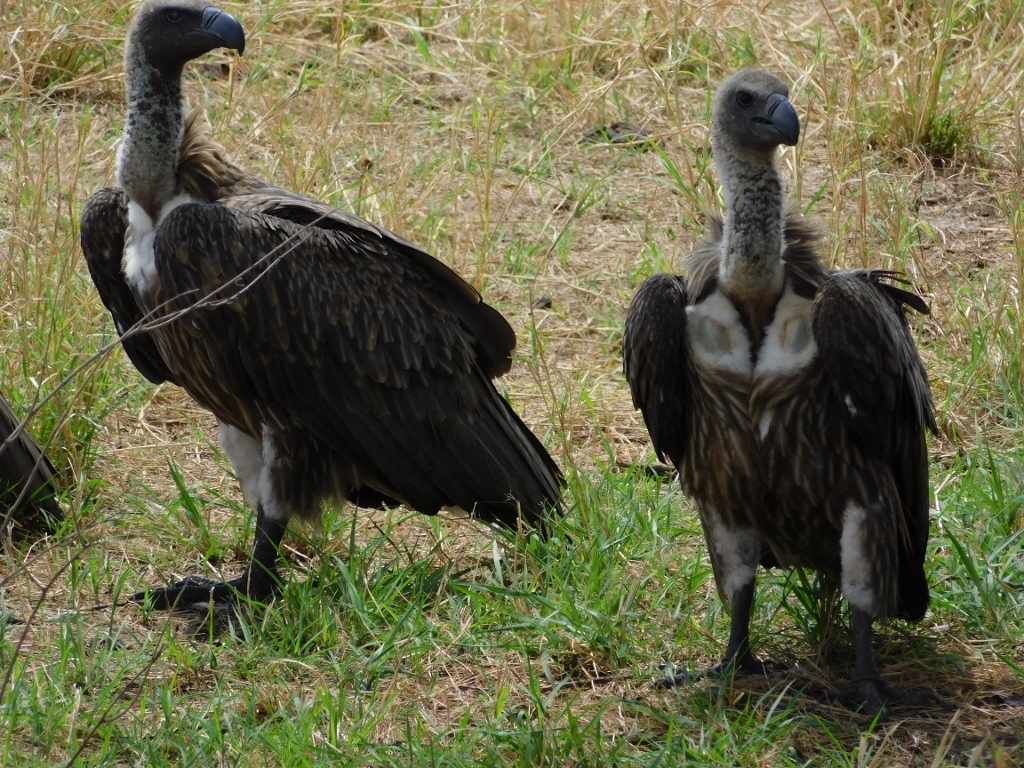 White-backed vulture
White-backed vulture
We also saw the remains of a zebra not far away, which must have caused the vultures to gather here.
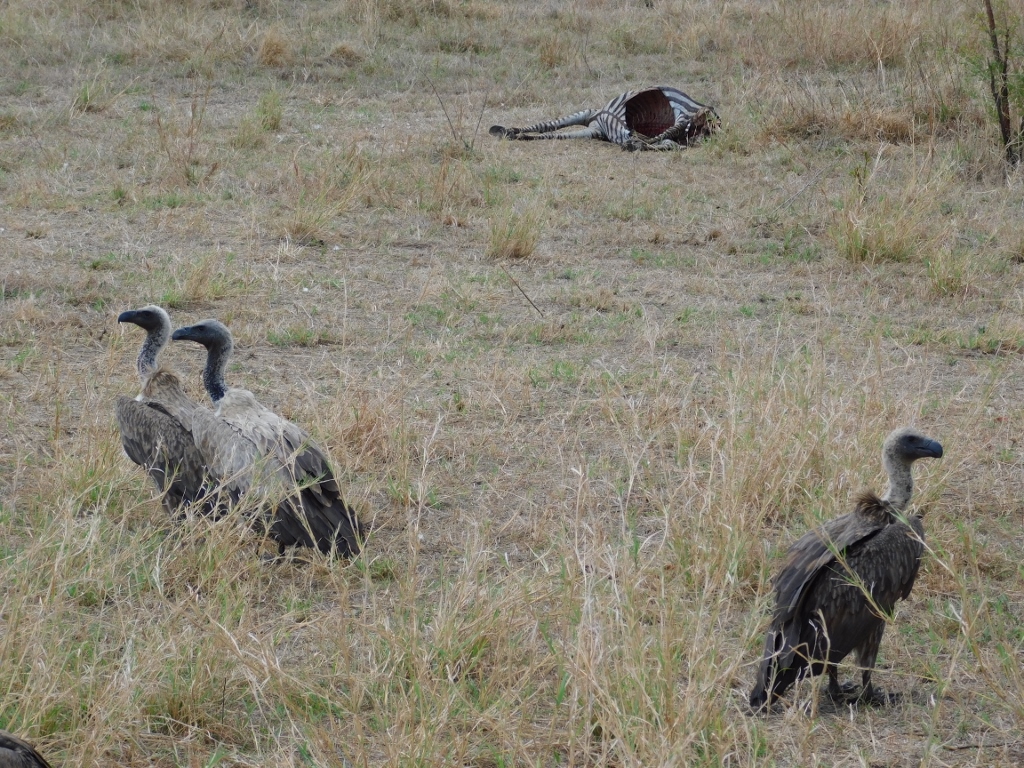 White-backed vulture and a zebra carcass
White-backed vulture and a zebra carcass
When we started to move again, I spotted and photographed several vultures in a tree and later, when I returned to Belgrade and shared the photos with my ornithologist friends, one of them, who has a particularly sharp eye, told me that in the tree, far to the right, one can also see a hooded vulture (Necrosyrtes monachus).
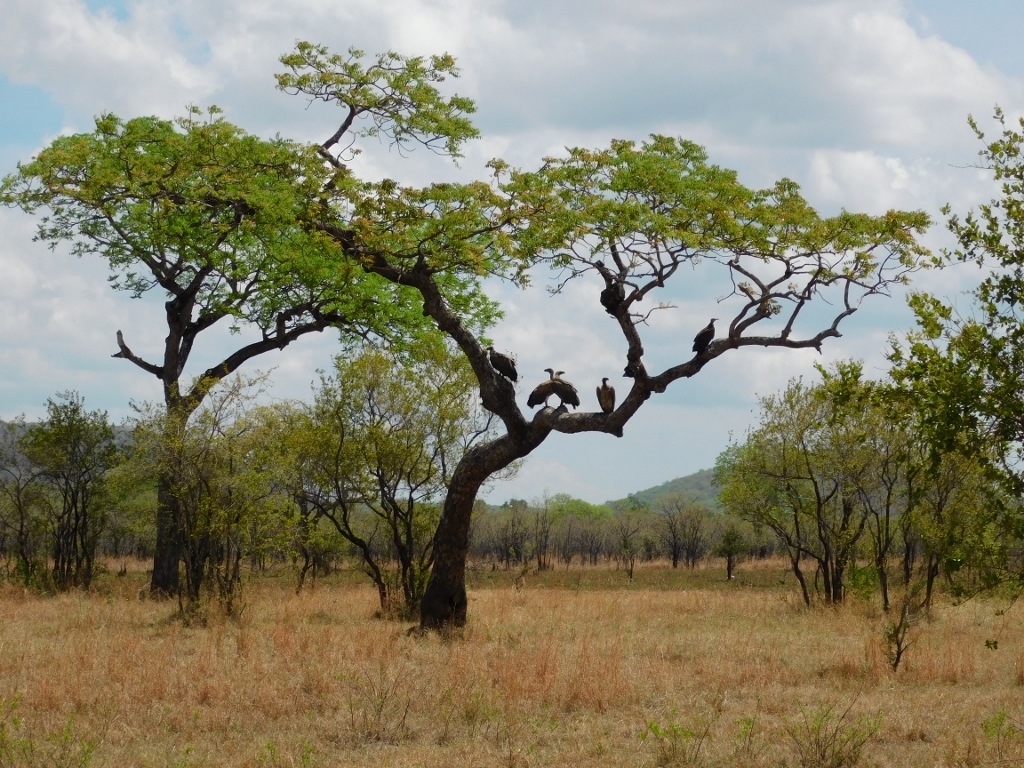 Two vulture species in a single tree
Two vulture species in a single tree
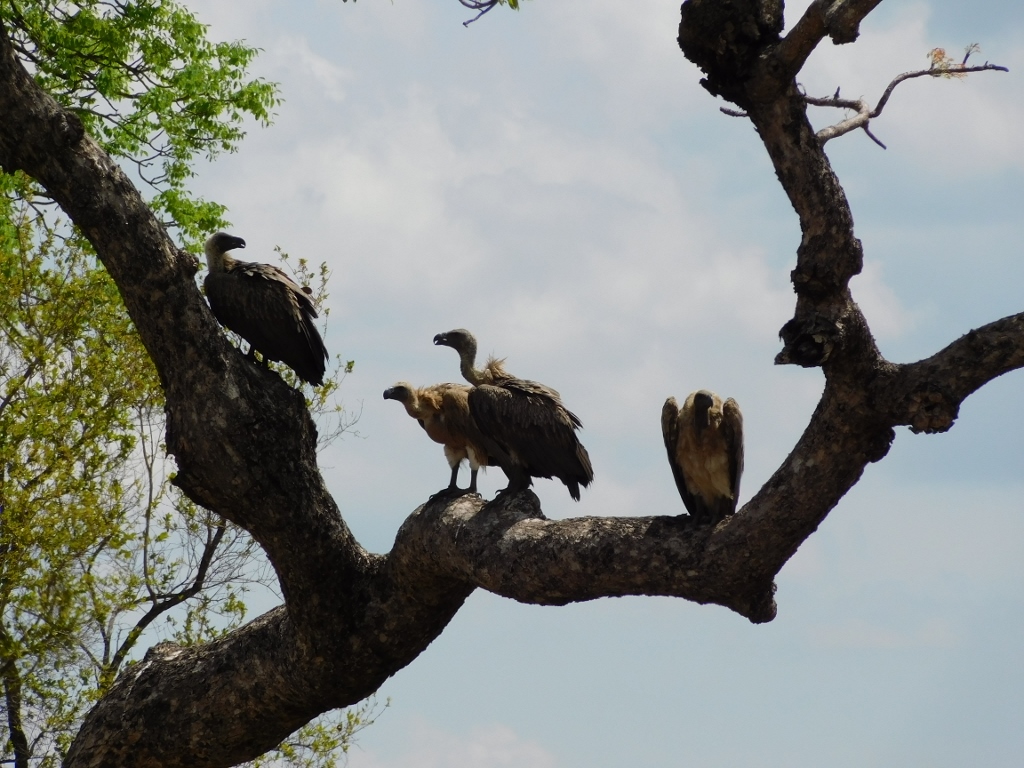 Vultures in a tree
Vultures in a tree
Very close to this tree, I spotted another one where only one vulture was standing. The driver/guide saw that I was trying to take photos of this, so at one point he stopped the vehicle. I was very pleased and grateful.
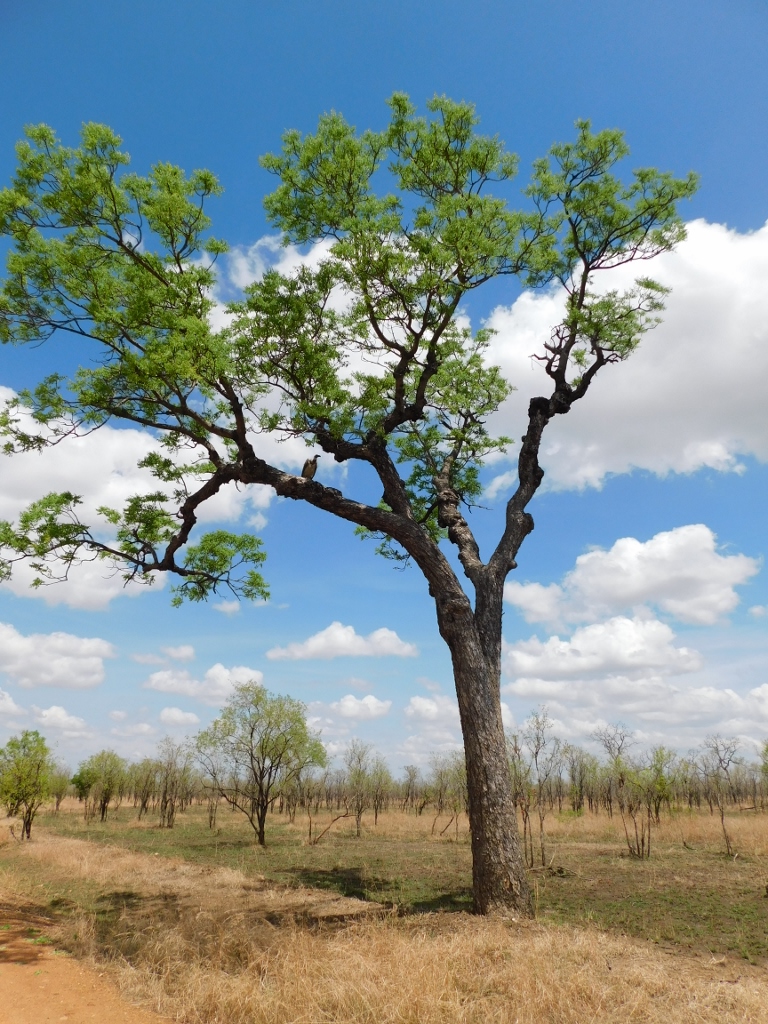 Vulture in a tree
Vulture in a tree
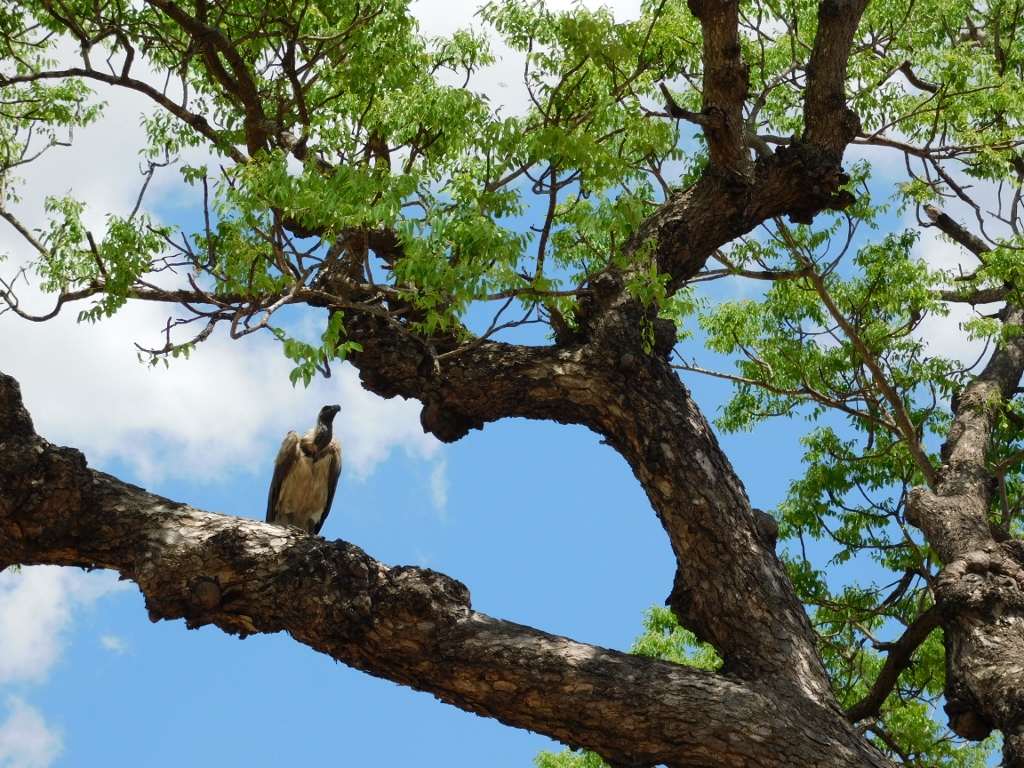 Vulture in a tree
Vulture in a tree
After this, we just continued with our visit to the Mikumi National Park.